Posted by Powee Celdran
DISCLAIMER: Although this story is based on historical events and characters, it is mostly based on my own personal theories and hypotheses on how things would be if Byzantium was around in the 16th century, thus it will be half fictional.
READ BYZANTINE ALTERNATE HISTORY CHAPTER XII FIRST!

Welcome to the epilogue of the Byzantine Alternate History series by the Byzantium Blogger! Unlike the past 3 articles I wrote which were spin-off stories to chapters I, II, and III of my Byzantine Alternate History series, this one will not just be a follow-up to chapter XII the finale of Byzantine Alternate History set in the 15th century but more or less an entire new chapter itself. However, since this story is basically an epilogue to the entire 12-chapter series and the conclusion to chapter XII, this one will still not be labelled as chapter XIII as the entire series was just limited to 12 chapters. This story despite being set in an entirely new century with its own timeline being the 16th century will still not be chapter XIII as it will basically just follow-up the events of chapter XII set in the 15th century together with its alternate history outcome, unlike all the other 12 chapters of Byzantine Alternate History which were all stand-alone stories with their own alternate history scenario wherein their alternate history outcomes did not continue to the next chapter. In this case, it will be different as the outcome from chapter XII wherein history was altered would continue on to this chapter, and so before reading this it is best you read chapter XII first! Now, as this story will be an epilogue to the entire 12-part series and a follow-up to chapter XII, this one will discuss what it would be like if the Byzantine Empire still survived up to the 16th century as true enough chapter XII ended with Byzantium still standing after 1453, which was the year Byzantium itself fell to the Ottoman Empire in real history. As this story discusses a what if of Byzantium still standing in the 16th century, basically everything happening around the world would still be the same with the only major difference being that the Ottoman Empire would not be around, which would therefore be a major change as the Ottomans true enough played a very major role in the story of the 16th century. Considering too that the 16th century saw so many developments happening around the wider world such as the spread of the Renaissance that was born in the 15th century to the rest of Europe, the Age of Exploration and colonization of new lands across the oceans, new scientific discoveries, and the Protestant Reformation, this chapter will include these happenings as well, though to keep things simple as I do not know the 16th century very well like how I know the history of Byzantium from the 4th-15th centuries, most of the story will be about Byzantium in the 16th century and how it will be keeping up with all the changes the world had been going through in the 16th century. On the other hand, as this story is more or less just an epilogue to chapter XII, it will not be too long and would not explain as much in terms of context the way the 12 alternate history chapters did, rather it would be more to the point without much side stories, though before moving on to the 16th century setting of this story, we will first have a recap of chapter XII and a summary of the history of the world before 1500 and what would be happening in the fictional post-1453 Byzantium. Additionally, although the rest of the events happening around the world in this story would be real, almost everything here will be fictional and based on my own hypothesis especially on the Byzantine angle as true enough Byzantium never in fact made it to the 16th century. Therefore, whatever would happen in this story would sound silly with so much things being made up, but it would not really matter for me as this is just my own hypothesis on what would happen if Byzantium survived into the 16th century. At the same time when writing this story, I thought that this would be the perfect opportunity to put Byzantium in a period of history many would be familiar with, as true enough many would be very much familiar with events and people of the 16th century than they would with previous centuries based on my observation.

Follow me, the Byzantium Blogger on Social Media:
Instagram: @Byzantine_Time_Traveller
Facebook: Byzantine Time Traveller
Youtube: No Budget Films
Deviantart: Byzantium-blogger55
Art Station: Powee Celdran Porphyrogennetos
Patreon: Byzantine Time Traveller

Note: Since this story is set in the 15th and 16th centuries after the fall of the Western Roman Empire, the Byzantine characters here will be referred to as Byzantines, not Romans.
With chapter XII being one epic finale to the alternate history series featuring an epic battle to recapture Constantinople from the Ottomans in 1458, its premise was that Constantine XI Palaiologos- who was remembered as the last Byzantine emperor that died defending Constantinople against the Ottomans in 1453- instead of choosing to fight to the death against the Ottomans like in real history chose to instead temporarily surrender it to the ambitious Ottoman sultan Mehmed II “the Conqueror” in order to buy time to forge alliances with the now much stronger powers of Europe to one day recapture Constantinople from the Ottomans.

True enough, chapter XII ended with Constantine XI being able to join forces with the armies of Hungary, Albania, Wallachia, Venice, Genoa, and Portugal after submitting to the pope and making the Byzantines Catholic thus resulting in recapturing Constantinople from the Ottomans despite doing it at the cost of the lives of Constantine XI and Mehmed II. Although Constantine XI together with Mehmed II were killed in action at the end of chapter XII, the Ottoman Empire after Mehmed II’s death disintegrated while the Byzantines were able to recapture Constantinople with Constantine XI’s younger brother Thomas Palaiologos becoming the new emperor all while the Balkans which was prior to that under the Ottomans was partitioned between Hungary, Serbia, Albania, and Wallachia whereas the Portuguese Kingdom became a new naval ally to the Byzantines despite the great distance between Portugal and Constantinople. Now as for the premise of this epilogue story, the Byzantine Empire in this case after being restored in 1458 by Thomas Palaiologos would slowly rebuild itself and even regain territory in Greece and Asia Minor but still not be a major power anymore the way it used to be centuries earlier, although in this story’s case Byzantium would still continue to live on past the year 1500. However, despite Byzantium still surviving up to the 16th century in this story, the major change would be that Byzantium would no longer be what it once was as a Greek speaking Orthodox empire, instead it would adapt more and more to the developments in the 15th and 16th centuries and become a more global minded Catholic empire willing to be more in touch with the other Catholic powers of Europe and being open to have trading alliances with them.

Although despite Byzantium here adapting to the times and becoming Catholic, it would still be a majority Greek speaking empire but with changing customs as no longer would they wear the clothes they wore for centuries, but instead they would adapt to the fashion styles and architecture and art as well of the Western world. At the same time too as this story will be set in the early 16th century, it will also discuss the more important happenings of the world as more developments were taking place outside Byzantine lands and the Balkans- like it did in real history- and again this would include the Renaissance of Italy and its spread to the rest of Europe, the changing of art and fashion styles, the Age of Exploration and new colonies established across the oceans which then introduced new products to Europe, the development of new scientific inventions and discoveries, and by the early 16th century the Protestant Reformation that began in Germany and spread across Northern and Western Europe, and how Byzantium would react to it. The main part and climax of this story would take place as the 1530s begin and here Byzantium is under the rule of the fictional emperor Justinian III Palaiologos, a grandson of Thomas Palaiologos who would be an exception of this time as he would be the first ambitious warrior-emperor in ages willing to once again expand his empire but at the same time can’t because his empire is soon to face an invasion that could put an end to it.

In the meantime, this story will also discuss the long-lost branch of Byzantium’s ruling Palaiologos family that had ruled the small Northern Italian state of Montferrat for over 200 years- which was in fact true in real history- and here in this story, the fictional emperor Justinian III would be shocked learning that his distant cousins rule some lands in Italy and thus for this story’s climax, with Montferrat now having a succession crisis with no more male heirs to inherit it- just like what happened in real history as well- one of their female heirs which is Margaret Paleologa- a real historical figure too- would here consider marrying her distant relative Justinian III who in this story would still be unmarried at this time. As Justinian III would become emperor, Montferrat meanwhile under the other branch of the Palaiologos family would be in a difficult situation as they had no more male heir to continue their rule over Montferrat all while the ambitious expansionist Holy Roman emperor of this time Charles V of the Habsburg Dynasty would in this story be posing a threat to both Montferrat and Constantinople. In real history, the Palaiologos Dynasty’s hold on the small state of Montferrat ended in 1536 when Montferrat was absorbed into the Duchy of Mantua as Margaret married the Duke of Mantua Federico II; however, in this story rather than choosing to marry Federico II, Margaret would simply give up her family’s claim on Montferrat and instead marry the Byzantine emperor to reunite the Palaiolgos family. At the same time as well, this story of Byzantium surviving into the 16th century would feature new rising powers including the Principality of Muscovy in Russia that would aim to challenge Byzantium claiming that they are the true Byzantium despite Byzantium itself still living on as Muscovy was still proudly Orthodox while the real Byzantium was no longer, and far to the east the new rising power of the Persian Safavid Empire which could be seen as either a potential threat or ally to Byzantium. As for its climax, this story would feature a scenario wherein the ambitious Holy Roman emperor and King of Spain Charles V- who is in fact a well-known historical figure- now becoming Europe’s most powerful man ruling the Holy Roman Empire- that was neither holy, nor Roman, nor an empire- makes an attempt to invade the Byzantine Empire itself all while Byzantium too faces the rise of Muscovy in Russia as a new potential threat to their existence. With this story being in the 16th century, Byzantium would now undergo a major change from being a Greek Orthodox empire to a Catholic and global minded one the same way Byzantium centuries ago evolved from a Romanized Latin speaking empire to a Greek one, and with Byzantium as a new global minded power they too would take part in the developments happening in Europe and in the new age of trade, exploration, and colonization wherein Spain, Portugal, and France have so far been dominating in. Although this story will be set in an era in which Byzantium no longer existed, thus making almost everything here fictional, it would still maintain the same old elements featured in Byzantine era stories including shady plots and court intrigues, epic battles, feats of diplomacy, religious conflicts, powerful women with equally powerful men, and a legacy of a thousand year old empire to be honored; and to give you all a warning lots of blood and gore! Lastly, I would again have to say that since this story features an entirely fictional scenario being Byzantium in the 16th century, it is all based on my hypothesis and not really on any sources, and thus it may be quite a silly one especially to those who know the much more popular 16th century history of Europe and the world very well in which there are many out there that I know of. Other than that, this story’s lead character Emperor Justinian III was actually based on a drawing by Diogo da Cunha (follow him on Instagram @Diogos_Tales) of the same character with the same name which is also a fictitious Byzantine emperor who would rule the empire if Byzantium survived up to the 16th century, thus I would have to credit the artist Diogo for giving this story’s lead character and for giving a premise to this story through the character of Justinian III; while I would also like to thank the artists (jjulie98, HistoryGold777, Amelianvs, and Ediacar) as their works would be featured in this article.


The Leading Characters:
Justinian III Palaiologos- Byzantine emperor since 1528 (fictional)
Margaret Paleologa- Heir of Montferrat and wife of Justinian III
Anne of Alencon- Mother of Margaret Paleologa
Charles V Habsburg- King of Spain since 1516 and Holy Roman emperor since 1519
Federico II Gonzaga- Marquis of Mantua since 1519 and duke since 1530
Isaac Palaiologos- Byzantine imperial court advisor and secretary, uncle of Justinian III
Giovanni Giorgio Paleologo- Marquis of Montferrat since 1530, uncle of Margaret
Vasily III Ivanovich- Grand Prince of Moscow since 1505
Background Guide: Byzantines/ Montferrat (blue), Holy Roman Empire (red), Moscow (green).
The Background- Byzantium after 1458 and Developments around the World (1458-1528)

Where chapter XII ended, the Byzantines together with their Genoese, Venetian, Albanian, Hungarian, Wallachian, and Portuguese allies managed to recapture Constantinople from the Ottomans- who took over Constantinople in 1453- in 1458.

However, the battle to recapture Constantinople was a long and difficult one until the Portuguese and their powerful fleet under their prince Ferdinand from their ruling Alviz Dynasty came to their aid and turned the tide against the Ottomans, but in the process of this the Byzantine emperor Constantine XI Palaiologos died together with the Ottoman sultan Mehmed II when both battled each other using carriages to the point of falling off a nearby cliff and exploding in midair as the carriage that fell wherein both landed on had gunpowder barrels that exploded in midair. With Constantine XI having died, his younger brother Thomas Palaiologos was crowned as the new Byzantine emperor while the Hagia Sophia- which was once an Orthodox church but in the past 5 years under the Ottomans converted into a mosque- became a Catholic cathedral and as promised in the deal to submit to the pope and Catholic Church in order to gain allies from Western Europe, the Byzantine Empire itself was to change its religion from Orthodoxy to Catholicism, meaning its main cathedral the Hagia Sophia had to be transformed into a Catholic cathedral and the position of the Patriarch of Constantinople abolished wherein instead the Patriarch of Constantinople became the Catholic Archbishop of Constantinople answering to the pope.

When becoming the restored Byzantine emperor, Thomas had the mess of Constantinople from the battle against the Ottomans cleaned up while having a statue built in honor of his late older brother Constantine XI built above the city’s main column, the Column of Constantine- built in honor of the city’s founder the Roman emperor Constantine I the Great (r. 306-337)- whereas the late Constantine XI was made a national hero of the empire for his sacrifice in battling the Ottomans which won them their victory allowing the Byzantine Empire to continue by taking back the capital, while the Byzantine senate too was reestablished. The Ottoman Empire meanwhile fell into pieces following Mehmed II’s death together with Constantine XI’s, as with no more sultan in charge there was no more leader while all of Mehmed II’s relatives in this story’s case too were put to death by Thomas’ orders to put an end to all claims on the Ottoman throne, and so because of this the surviving Ottoman generals and nobles returned to Asia Minor and once again returned to ruling their own small feudal states or Beyliks, the way the Turks of Asia Minor including the Ottomans were before they were united into the Ottoman Empire under Osman in 1299.

As most of Asia Minor reverted back into small and disorganized Beyliks, the Byzantines from Constantinople restored their rule to Thrace all the way down to the city Thessaloniki which was once theirs before it fell to the Ottomans in 1430 while also regaining some of their old heartland Asia Minor up to the city of Nicomedia together with parts of Greece including a number of islands. With the Albanians under their own leader George Kastrioti also known as Skanderbeg assisting in recapturing Constantinople, Thomas agreed to cede the region of Epirus in Western Greece as well as Macedonia to the Albanians, while the Serbians too unlike in real history which fell to the Ottomans in 1459 were here able to continue ruling the Central Balkans, the Principality of Wallachia (in today’s Romania) under its prince Vlad III also known as “the Impaler” which was prior to this an Ottoman vassal was given control over Bulgaria which prior to that was under the Ottomans, while the Portuguese prince Ferdinand in return for providing the Byzantines and their allies naval assistance in taking back Constantinople were given the Aegean island of Lemnos to be used as a Portuguese naval base while the Kingdom of Portugal was made into a new Byzantine trading ally as well.

Now by this point, the Kingdom of Portugal in the far west of Europe along the Atlantic coast was already a growing maritime power not only in trading in the Mediterranean but in exploring and already colonizing lands far to the south in Africa that were until then unknown to many Europeans, and thus products from these lands in Africa including wood and oils were even brought to Constantinople impressing the Byzantines. Now in his time as emperor, Thomas would not really have much resources and men to recapture lands they lost to the Ottomans and other powers in the previous years, considering that before 1453 the Byzantine army was so severely reduced and thus in the meantime wherein Thomas would be rebuilding the Byzantine army, he would mostly rely on allied troops from either Albania, Wallachia, and Hungary as well as ships from Genoa, Venice, or Portugal to defend his empire from raids done by the former Ottoman troops in Asia Minor as true enough the Byzantines no longer had a fleet, though once Constantinople was recaptured Thomas too began having the fleet rebuilt.
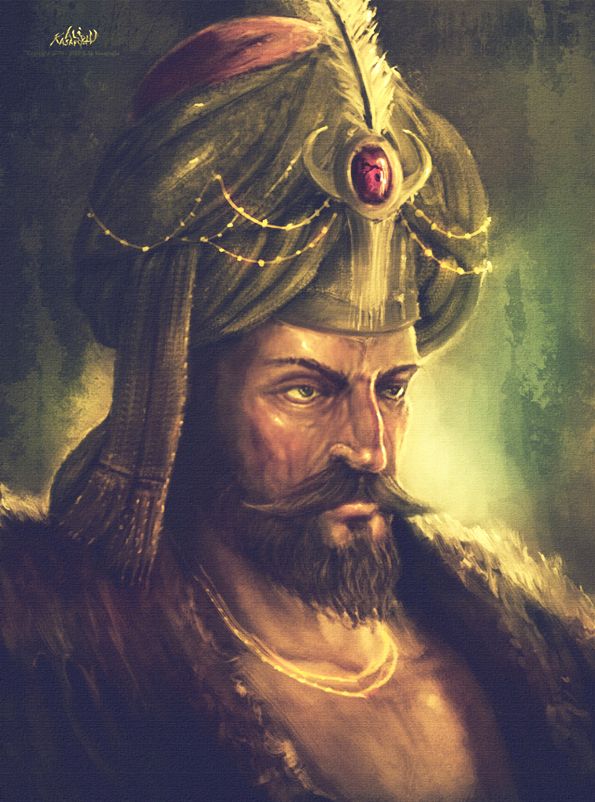
Now in real history, the Ottomans under Mehmed II following their capture of Constantinople in 1453 captured Athens in 1458 from the Latin Duchy of Athens, Serbia in 1459, the still Byzantine held Morea (Southern Greece) in 1460, and the last standing Byzantine Empire of Trebizond which was founded in 1204 in 1461, while in 1463 the small Balkan kingdom of Bosnia too fell to the Ottomans and in 1478 all of Albania which the Ottomans tried so many times to capture finally fell to them. In this story however, with the Ottomans having disintegrated none of this would happen and so the Latin Duchy of Athens as well as Serbia, Albania, and even Bosnia would choose to be in peaceful terms with Thomas’ Byzantium while the Morea which in real history was ruled by Thomas and his other older brother Demetrios Palaiologos ruling as its Despots (princes serving under the Byzantine emperor) too in this story would not fall but instead still be under the Byzantines wherein here Thomas’ 2 young sons Andreas and Manuel would be made as its joint Despots as Thomas who was prior to that its despot became the new emperor in Constantinople and Demetrios who was also its despot before had in this story’s case- as discussed in chapter XII too- had died in the attack of Constantinople in 1458 being killed by Mehmed II himself as Demetrios who had betrayed his brothers by siding with the Ottomans after a change of heart opened the gates of Constantinople to his brothers Constantine and Thomas. Now ever since the 4th Crusade attacked and temporarily ended the Byzantine Empire in 1204 before it was restored in 1261- as discussed in chapter X of Byzantine Alternate History- a new splinter Byzantine Empire was formed in 1204 by descendants of the former imperial Komnenos Dynasty that ruled Byzantium from 1081-1185, and this was the Empire of Trebizond located at the northeast edge of Asia Minor along the Black Sea, although since they lacked the resources to expand to become a powerful empire, Trebizond chose to instead be a local maritime power in the Black Sea.
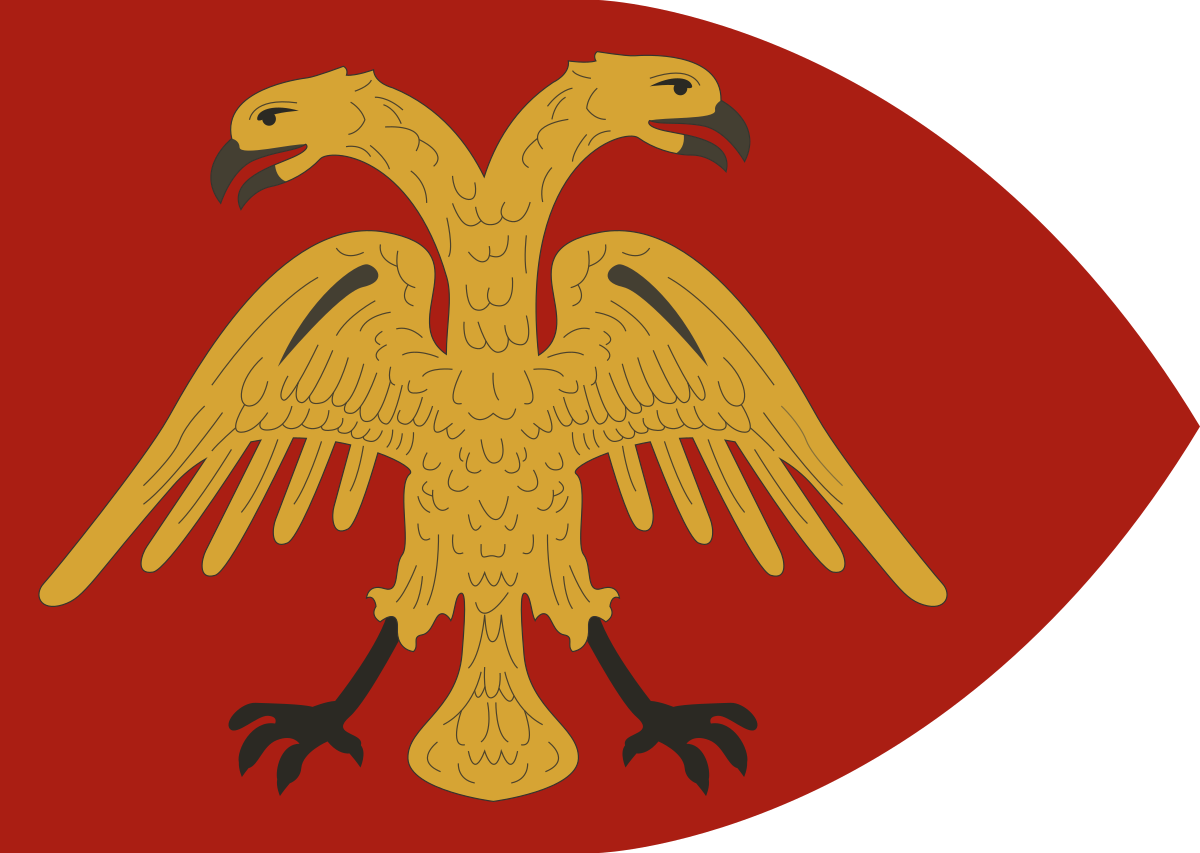
In real history, this Empire of Trebizond survived up until 1461 when Mehmed II himself captured it from its last emperor David Megas Komnenos, however in this story with Mehmed II no longer around here, the Emperor of Trebizond David would still not surrender his imperial position to Thomas but would at least choose to be in good terms with the main Byzantine Empire, and thus there would still be more than one Byzantine Empire the way it was ever since 1204. As for Thomas, the biggest difficulty to him other than rebuilding his empire and Constantinople was in honoring his agreement with the pope to enforce the Catholic faith among his subjects as Byzantium had just freshly converted and still many of its people were proudly Orthodox Christians who as mentioned back in chapter XII would prefer to be under Ottoman rule rather than following whatever the Latin Church told them too, and thus Thomas’ early reign would be full of violence in Constantinople with many people rioting against his pro-Catholic policies and the suppression of their Orthodox faith wherein Thomas would have all this rioting put down with force thus making him highly unpopular.

Thomas though being very Western-minded was more than willing to enforce Catholicism in his empire and so he did not care if he was removing his people’s soul being Orthodoxy as he believed that for the Byzantines as a society to progress the way the powers of Western Europe was, they had to be like them and this meant being Catholic, but in order to stay in power and not be overthrown by a popular revolution by his proud Orthodox subjects, Thomas chose to slowly impose Catholicism among his subjects and thus he allowed his Orthodox subjects to freely practice their traditions as long as they did not do it in opposition to his rule, otherwise it would be suppressed violently. In this story, only by 1468, 10 years after Thomas became emperor would things for the Byzantines be fully stable and here the new Byzantine army now adapting to the Western style of arms and armor as well with some units even using gunpowder weapons including rifles and cannons would be for the first time put into action by fighting campaigns against the now disunited Turks in Asia Minor, and true enough by 1470 the entire Western coast of Asia Minor including the important city of Smyrna would return to Byzantine hands. In the meantime, more developments would happen around the world during Thomas’ reign, and all this would be real historical events such as for instance the growth of the Renaissance in Italy wherein knowledge of Ancient Greece and Rome would have a revival in Italy thanks to Byzantine scholars in the past decades that escaped the unstable and poor Byzantine Empire and fled to Italy where the noble families there had the money to sponsor them, and considering that a lot of the texts about the Classical world of the past were in Greek, Byzantine scholars were in demand in Italy as many Italians were curious to know about the wonders of the ancient days, and considering that the printing press had already been invented, knowledge began to spread faster.

In Thomas’ reign in this story, one major achievement of his was in introducing the first printing press to Byzantium wherein a few machines would be established in Constantinople, and thus more and more people in his empire would start becoming literate due to more access to books and letters. Other than the rise of the Italian Renaissance, other important events happening around the world would include both the Kingdoms of England and France finishing off the Hundred-Years’-War with each other in 1453, although despite finishing the war between each other England fell into a succession crisis and series of civil wars known as the Wars of the Roses while in the 1470s France which won the Hundred-Years-War against England would become a dominant and highly stable European power under the Valois Dynasty. In the meantime, a new European superpower would emerge by this point being Spain and this would happen just like in real history in 1469 when the two separate Spanish kingdoms of Castile and Aragon would unite with the marriage of the King of Aragon Ferdinand II and Queen of Castile Isabella I, and from here on Spain under one crown was a superpower as both Castile and Aragon prior to this were already powerful kingdoms with Aragon having control over lands across the Mediterranean including Sicily and even the Duchy of Athens, as true enough this Duchy of Athens was part of the Crown of Aragon, which was at one point in the late 13th century a Byzantine ally.
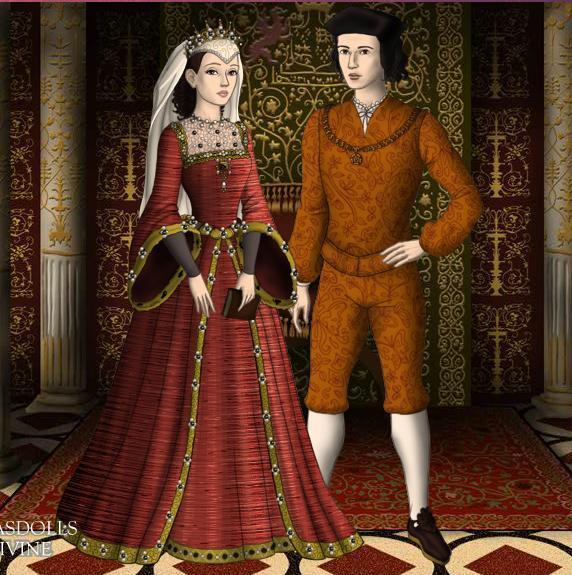
In real history though, Aragon lost control of Athens to the Ottomans in 1458, but in this story since the Ottomans were already gone, Athens would still be under Aragon and here since 1469 under the new united Spain, which would thus trouble Thomas as a neighboring state was now under a new superpower that he was unsure whether they would be a potential ally or enemy. In this story just like in real history, Thomas’ daughter and eldest child Zoe would be arranged to marry the Grand Prince of Moscow in Russia Ivan III in 1472, however in real history the difference was that Byzantium had already fallen and Thomas had already died in 1465 while his 3 children were educated in Rome and so it was the Byzantine Greek Catholic cardinal and influential scholar Basil Bessarion that arranged Zoe to marry Ivan III by having her travel all the way north from Italy to Russia, though in this story with Thomas still alive in 1472, he together with Bassarion who here would be the Archbishop of Constantinople would arrange this marriage hoping to maintain ties with the Principality of Moscow (Muscovy), and thus Zoe here would travel from Constantinople north to Moscow to be married to Prince Ivan III.
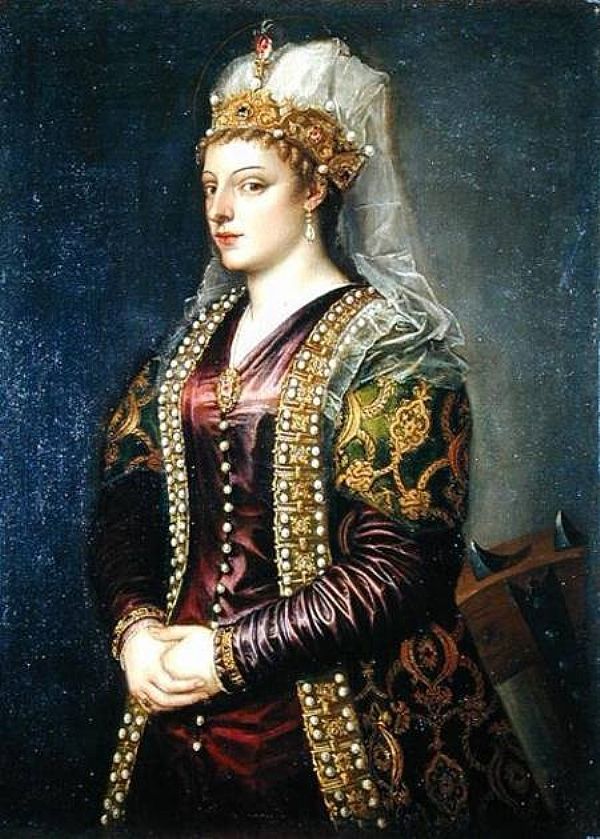
Zoe although growing up converting to Catholicism when marrying the Orthodox Ivan III renounced her Catholic faith and returned to being Orthodox much to the dismay of her father Thomas and Cardinal Bessarion who arranged the marriage to make sure both faiths would be at peace with each other, and thus this marriage which was thought to be one to make an alliance with Muscovy was more or less a failure. In 1475 in this story’s case, the island of Lesbos which since 1355 had been ruled by the Genoese Italian Gattilusio family as Byzantine vassals would return to direct Byzantine rule as the Gattilusio family had died out while at the same time another set of Aegean islands would be ceded to Portugal by Thomas to ensure that the Byzantine-Portuguese naval alliance would live on. Additionally, Thomas would also maintain his alliance with Hungary as here Hungary was also major power under their powerful military king Matthias Corvinus as Matthias’ father the powerful Hungarian general John Hunyadi also assisted in the recapture of Constantinople from the Ottomans in 1458, wherein in the case of chapter XII, Hunyadi died in action there. Now in this story, Thomas’ reign would end in 1479 when he would die at the age of 70 after ruling for 21 years (1458-1479), and although he ended his reign leaving the empire much more stable than he had founded it, the Catholic faith wasn’t yet entirely strong in Byzantium as many people were still strongly Orthodox.

Following Thomas’ death in 1479, his eldest son Andreas the Despot of the Morea now age 26 would travel to Constantinople to succeed his father as emperor leaving behind his younger brother by 2 years Manuel in the Morea in Southern Greece to continue ruling as its despot answering to Andreas. Now in real history, Andreas fled to Italy at a young age following his father’s death and would be educated in Rome and despite having no power, he still held the title of “Emperor of Constantinople” in which the Byzantine refugees in Italy referred to him as, however as Andreas grew older in Italy he wasted all his money and fell deeper and deeper into poverty to the point of selling his title to the King of France Charles VIII in 1494 hoping the French would recapture Constantinople from the Ottomans. However, Charles VIII died in 1498 with the title returning to Andreas who would then die in poverty in Rome in 1502 as the last holder of this title, although before his death in real history Andreas thought of selling his title again this time to both the rulers of the united Spain Ferdinand of Aragon and Isabella of Castile in which both refused the offer.

In this story however none of it would happen as Andreas was already set to rule the Byzantine Empire and would become emperor after his father’s death in 1479, although like in real history Andreas here too would marry an Italian noblewoman named Caterina. Andreas would then begin his reign continuing his father’s policies in enforcing Catholicism in the Byzantine Empire while also continuing his father’s alliances with Portugal, Hungary, Albania, and Wallachia. Andreas however would not turn out to be as strong as his father Thomas was as emperor as he was rather wasteful in spending but he was still aware of the happenings around him and in his empire, and at least he still continued to slowly rebuild Byzantium. Now at this point in real history, Mehmed II had already conquered all of Albania and basically the entire Balkans for the Ottoman Empire while in 1480 he attempted a naval invasion of Southern Italy which failed and thus he died in the following year 1481. In this story however, Andreas would not attempt an invasion of Italy but by 1480 the independent Albanian state which would still be standing now under Skanderbeg’s son Gjon Kastrioti II as the Lord of Albania following his father’s death in 1468- like in real history too- would break his father’s peace with the Byzantines and make raids into Byzantine Greece.

Andreas here would deal with the Albanians with force and would initially lose a number of battles to them due to the Albanians continuing to use the guerrilla tactics of Skanderbeg against the Ottomans previously. Although initially failing to crush the Albanian forces, Andreas’ Byzantine troops led by his younger brother Manuel the Despot of the Morea now in full plated armor and using firearms would defeat the Albanians in 1482 thus forcing Gjon II of Albania to pay tribute to the Byzantines. The Albanians however would soon enough refuse paying tribute and thus the Byzantine army led by Manuel together with the Venetian and Portuguese fleets would in 1485 invade Albania and fully annex it back to the Byzantine Empire, forcing its lord Gjon II to flee to Italy for good. In the meantime as Andreas was ruling as emperor from Constantinople, more and more developments were happening around the wider world and this was not only the Renaissance in Italy particularly in Florence reaching its peak but that in England, the devastating succession civil war known as the War of the Roses had come to an end when Henry Tudor defeated and killed King Richard III at the Battle of Bosworth, and thus became King Henry VII of England restoring stability and establishing the Tudor Dynasty.
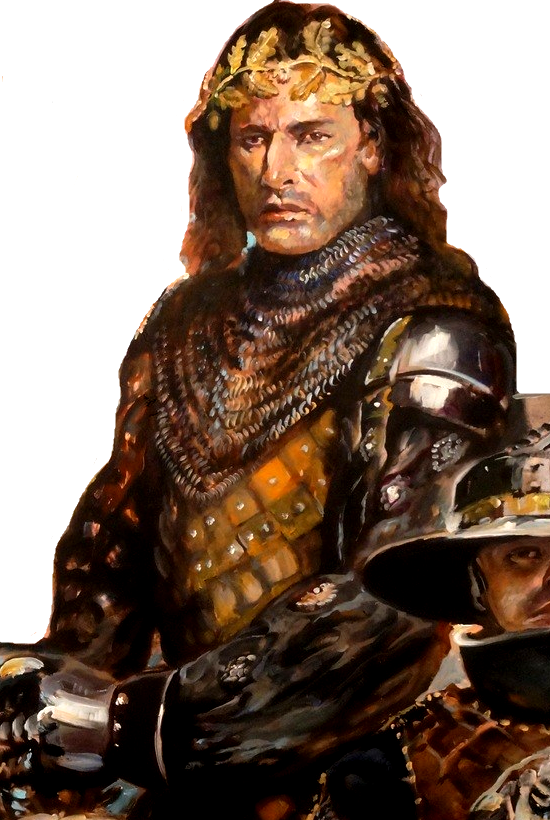
At the same time, both the Kingdom of Hungary under Byzantium’s ally Matthias Corvinus had continued to expand in territory- in this story’s case with Hungary even conquering the small Kingdom of Bosnia rather than the Ottomans conquering it- and so did the Principality of Moscow in Russia under Ivan III in which the latter had been expelling the Mongols who had been settling in Russian lands for a few centuries. In 1488, the one to make a major achievement was Portugal as here the Portuguese explorer Bartolomeu Dias sailed around the Cape of Good Hope in South Africa thus discovering a soon-to-be sea route that led directly to Asia. In 1490 though, the powerful King of Hungary Matthias Corvinus would die, and following his death both Hungary’s power would decline and so would their alliance with Byzantium come to an end. As for the now united Spain under the Catholic monarchs King Ferdinand and Queen Isabella, in 1491 to assert Spain’s role as a Catholic superpower, they began the Inquisition wherein Muslims, Jews, and heretics in Spain were tortured to convert to Catholicism, and following that in 1492 the Spanish captured Granada, the last Muslim stronghold in Spain from its last Moorish ruler Muhammad XII Boabdil forcing him to surrender, and thus ended the centuries old Reconquista or the war of the Christian Spanish to reclaim their lands from the Muslims which dated all the way back to when the Arabs invaded Visigoth Spain in the 8th century- mentioned in chapter V.

Following the end of the Reconquista with the Fall of Granada, both monarchs issued the Alhambra Decree which ordered the expulsion of all Muslims and Jews from Spain unless they converted to Catholicism resulting in about 200,000 fleeing Spain. In real history many of the Muslim and Jewish refugees that were expelled from Spain settled in the Ottoman Empire where they were granted asylum, but in this story with the Ottoman Empire no longer existent, they would seek refuge in Byzantine lands wherein Emperor Andreas would permit it even providing them safety, although this act of his would anger both the pope and the Catholic monarchs of Spain considering that Byzantium now too was a Catholic power. In 1492 as well, another major event took place for the Spanish in particular and this had to do with the Genoese Italian explorer Christopher Columbus convincing both Ferdinand and Isabella to sponsor his voyage across the Atlantic Ocean as he believed there was a way to reach Asia by crossing the Atlantic considering that the Portuguese had already found a possible way under Africa, thus Columbus thought of striking first in reaching Asia before the Portuguese did.
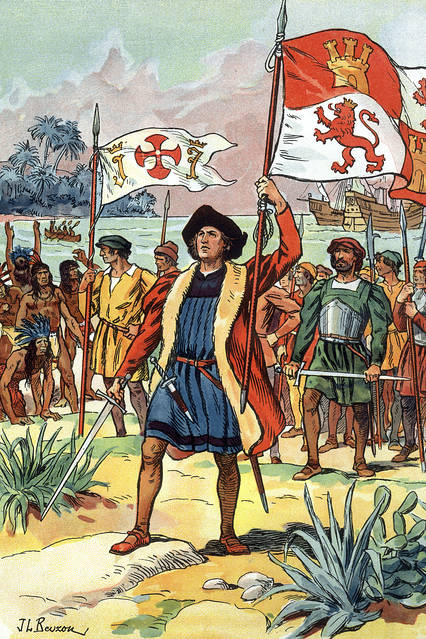
The king and queen of Spain true enough agreed and so by October of 1492, Columbus successfully crossed the Atlantic with 3 ships but rather than finding a way to Asia, he discovered a whole new continent altogether being the Americas, although he did not reach the mainland but just landed in a few islands in the Caribbean which he claimed for Spain, although when returning to Spain he lied to Ferdinand and Isabella that he reached India even calling the natives there as “Indians”. However, everyone including the Byzantine emperor Andreas would discover that Columbus did not reach Asia but land on a whole new continent- in which he was in fact not the first European to land on it as back in the early 11th century the Viking Leif Ericsson already made that accomplishment by discovering and temporarily settling in Eastern Canada- and so following Columbus’ discovery of 1492 he would again return for a second voyage in 1493 this time to establish Spain’s first colonies in the Caribbean.
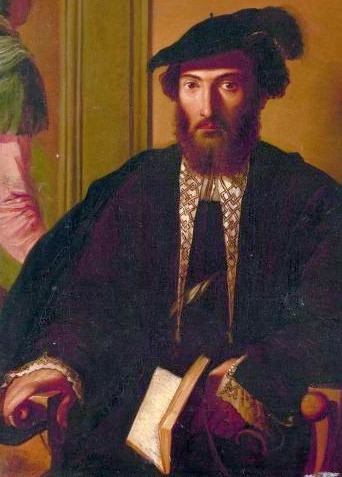
Following his 1493 voyage across the Atlantic to America, Columbus would make 2 more voyages until 1504, although other explorers too namely the Italian Amerigo Vespucci also working for Spain the way Columbus did would progress further into the Americas as Vespucci true enough in his voyage from 1499-1500 landed in the American mainland itself in today’s Venezuela, and thus the entire continent of America got its name from his first name “Amerigo”. Now when finding out that Columbus discovered a new continent altogether- as basically no one really knew Vikings 5 centuries earlier already accomplished that- the pope at this time Alexander VI being the Spanish Rodrigo Borgia got the rulers of Spain Ferdinand and Isabella and the King of Portugal Joao II of the Alviz Dynasty to agree on the Treaty of Tordesillas which basically divided the world between Spain and Portugal wherein everything west of Europe was to be under Spain which included the Americas and everything east was to be under Portugal while all other rulers of Europe had to respect it, and in this story’s case this included Andreas too considering that now being Catholic he had to agree with whatever the pope said.
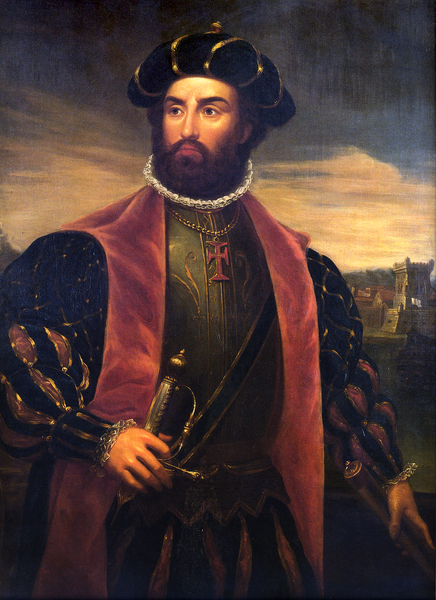
The Portuguese now would make further accomplishments in exploration as in 1497, the Portuguese explorer Vasco de Gama sailed past the Cape of Good Hope and true enough was able to reach India by sea while afterwards returning home to Portugal through the same route by 1499, and thus because of this discovery and honoring the Treaty of Tordesillas, only the Portuguese were allowed to sail in this route to get to Asia making the Spanish now have to look for another route. Byzantium in this case still being allies with Portugal would be lucky with this new discovery of Vasco de Gama as the Byzantines would be allowed to sail through this route if they wanted to, although the Byzantines still did not have a fleet powerful enough to sail across oceans the way Spain and Portugal did, although with the Portuguese as a Byzantine ally, many Byzantine sailors and traders too would join the Portuguese fleet from 1499 onwards in missions to India and to the rest of Asia.
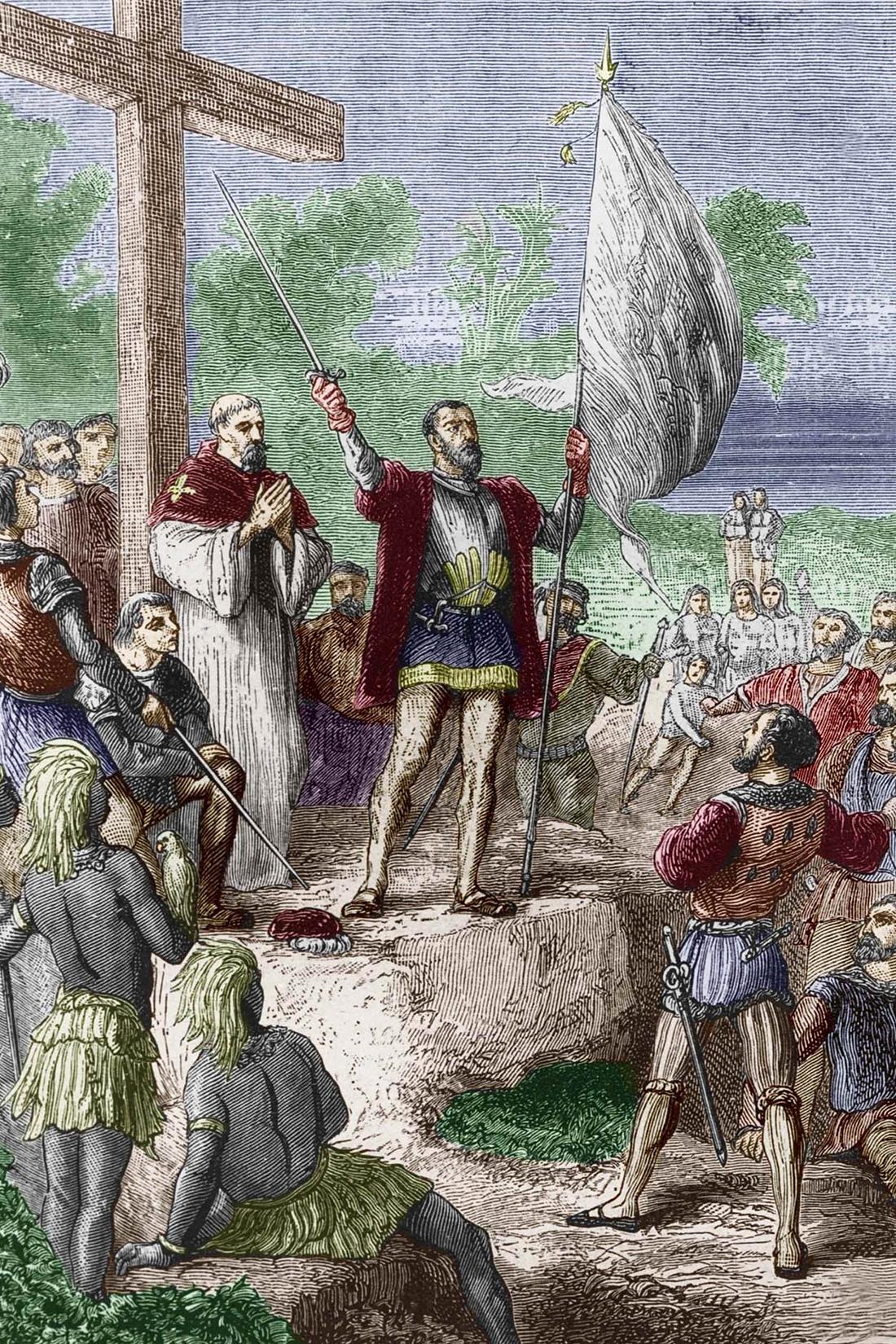
The Portuguese however would not entirely honor the treaty with Spain as in 1500 the Portuguese explorer Pedro Alvarez Cabral crossed the Atlantic too and thus discovered Brazil thinking it was an island and thus claiming it for Portugal. In the meantime, the Renaissance in Italy would grow to an even grander scale with artists and creators like Leonardo da Vinci and Michelangelo, and in this case with Byzantium still standing the art and sculptures of Michelangelo as well as Da Vinci’s paintings and inventions would be coveted even by the Byzantines while some of the nobles with enough money would buy some of their works while Andreas too would purchase one painting from each of them to be displayed in Constantinople’s Hagia Sophia. Andreas meanwhile would not have much longer to live, and like in real history, he would also die in 1502 in this story at the age of 49, although here he would die wealthy and as a ruler unlike in real history where he died in poverty living in Rome. As emperor in this story, Andreas basically lacked the mind of a ruler and was instead a decadent drunk who wasted the state’s money on partying and buying art including the works of Da Vinci and Michelangelo, although the empire was in good hands as his energetic wife Caterina mostly took care of state matters while his brother Manuel being a strong military man handled military matters. On the other hand, back in the year 1500 as the 16th century began, the one man who would one day rule most of Europe was born and this was Charles of the Habsburg Dynasty born in Ghent in today’s Belgium which was under the Holy Roman Empire, and he was one who had the luck of being related to Europe’s most powerful rulers being the grandson of Ferdinand and Isabella of Spain in his mother’s side and of the Holy Roman emperor Maximillian I Habsburg in his father’s side, and soon Charles would inherit both Spain and the Holy Roman Empire of Germany and its surroundings.


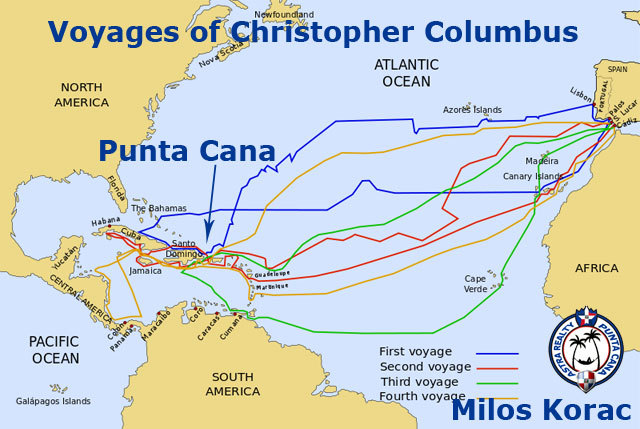


Andreas Palaiologos in this story’s case with his Italian wife Caterina had 2 sons the older one being Constantine– who was named after Andreas’ uncle the great emperor Constantine XI- born in 1487 and the younger one named Justinian– after the great 6th century Byzantine emperor- born 8 years later in 1495.

Following Andreas’ untimely death in 1502, his eldest son succeeded him as Emperor Constantine XII and being only 15 by the time he was crowned, his early years would be mostly dominated again by his mother Caterina as well as his uncle and Andreas’ younger brother the general Manuel who was still active, as well as by Andreas’ and Manuel’s cousin Isaac Palaiologos, an entirely fictional character for this story who would be the son of Constantine XI’s and Thomas’ problematic brother Demetrios- the same one who betrayed them and sided with the Ottomans in chapter XII but at the end returned his loyalty to Byzantium before dying- and here Isaac would be a financial advisor, imperial secretary, and the head of the senate in Constantinople. In this story’s case, Isaac being Demetrios’ son was born in 1457 just a year before the battle to reclaim Constantinople from the Ottomans in 1458 making him only a year old when his father died, and although never getting to know his father, Isaac shared his father’s strong Orthodox beliefs, but to keep himself in power in the now Catholic Byzantium, Isaac kept his strong Orthodox beliefs a secret. On the other hand, Isaac although known to be corrupt and scheming was a very brilliant political leader and with Byzantium under the hands of a young emperor together with his mother and uncle, it was really Isaac running the show for he knew the art of diplomacy and politics more than Caterina and Manuel did, thus making Isaac like one of the brilliant and scheming Byzantine eunuchs of the past despite Isaac not being a eunuch. In the meantime, around the world as the 16th century began, one of the most significant events in world history took place in Persia as here for the first time in over 8 centuries ever since the Sassanid Persian Empire was defeated by the Arabs and absorbed into their empire- if you recall from chapter IV of this series- Persia would be ruled by an ethnically Persian Dynasty, and thus a new Persian Empire was born.

This new Persian Empire born in 1501 was the Safavid Empire ruled by the dynasty with the same name, and here in 1501 the first Safavid ruler of Iran Ismail I founded his empire by uniting the people of Iran who in the past centuries had been under Arab and later Mongol rule under the Shia branch of Islam. The Byzantines in this case would soon enough feel threatened by the rise of the Safavid Empire in the east which was although not too near, although Isaac being a diplomatic genius, he saw them as a potential ally in the future. At the early years of the 16th century too, it was again Portugal being the rising world power considering that they had now found a route to India and thus began colonizing parts of India, and with the Byzantines still Portugal’s ally, Byzantine troops in this case would also assist the Portuguese in their conquests in India beginning 1501. By 1507, the Portuguese led by their general Alfonso de Albuquerque like in real history would also capture a number of bases such as Hormuz and Muscat along the Persian Gulf and here again with the help of Byzantine troops, and in 1509 the Portuguese assisted by the Byzantines again would defeat the Mamluks of Egypt and the Sultan of Gujarat in India at the naval Battle of Diu in the Arabian Sea, thus marking the beginning of Portuguese dominance over the spice trade in the Indian Ocean wherein Byzantium as Portugal’s ally would benefit from it as well.

Following this, the Portuguese would further expand their colonial empire as in 1510 Alfonso de Albuquerque again assisted by Byzantine troops in this story’s case would capture the region of Goa in Western India, then in 1511 Albuquerque would proceed further east and with Byzantine troops again he would conquer the Sultanate of Malacca in today’s Malaysia. The Portuguese again would still not yet stop their expansion eastwards after Malacca as their goal was to find the Spice Islands which was said to be part of the islands making up Indonesia, and in 1512 the Portuguese fleet joined by Byzantine sailors would sail from Malacca in an attempt to find it but fail. Although failing to find the Spice Islands, the Portuguese in 1513 again joined by Byzantine sailors would manage to actually find a sea route to China landing at the island of Macau which here was under the Chinese Empire under the Ming Dynasty. The now united Spanish kingdom on the other hand would also continue to make progress as the 16th century began, and in 1503 they defeated the French forces at the Battle of Cerignola in Southern Italy which was considered the first battle won by gunpowder small arms being guns, as prior to this, cannons were used more than smaller gunpowder weapons like guns, and here the Spanish forces’ victory was mostly attributed to the effectiveness of their rifles.

In 1504 though being the year after Spain’s victory over France, their queen Isabella after a long reign had died, although her husband Ferdinand still lived and continued to rule while their daughter Joanna succeeded her mother as Queen of Castile, and now Joanna was married to the Duke of Burgundy in the Holy Roman Empire Philip I who was the son of the Holy Roman emperor Maximilian I, and the same Charles who was mentioned earlier born in 1500 was their son. In 1506 then, Philip I the Duke of Burgundy who just became King of Castile died after only a few months of ruling as King of Castile in Spain while in this year too Christopher Columbus died in Valladolid in Spain, though thanks to him and his discoveries the Spanish began colonizing the American continent that by 1513 the Spanish explorer and general Vasco Nunez de Balboa crossed the Isthmus of Panama in Central America from the Atlantic Ocean to the Pacific Ocean, thus making him the first European to discover the Pacific Ocean in which the Spanish now believed that they could reach Asia if they crossed it the way Columbus thought he could reach Asia by crossing the Atlantic.

Over to the north in Russia on the other hand, Thomas’ daughter Zoe Palaiologina the wife of the Grand Prince of Moscow Ivan III the Great died in 1503 while in 1505 Ivan III himself died, thus their son Vasily III Ivanovich took over as the new Grand Prince of Moscow while the Grand Principality of Moscow too began to expand not only eastwards but westwards. Moscow’s westward expansion though was halted in 1514 when their forces were defeated by the combined forces of the Kingdom of Poland and their partner state the Grand Duchy of Lithuania at the Battle of Orsha in today’s Belarus. Back in Byzantium, before 1514, Constantine XII had already assumed full control over the empire while his mother Caterina retried and uncle Manuel had already died in 1512- the same year Manuel died in real history- although in real history, Manuel after living the rest of his life as a mercenary captain fighting wars in Italy decided to return to Ottoman Constantinople due to his lack of pay in leading troops, and true enough he was allowed to return and live peacefully dying there in 1512.

Now back in this story, although Constantine XII was the sole emperor having full control over Byzantium, his other uncle Isaac Palaiologos still dominated his rule and with Constantine being a rather weak emperor, the empire was still in good hands as Isaac despite all his corruption was highly capable at ruling. Back in real history, in 1514 too, the Ottoman Empire clashed with the Safavid Persian Empire at the Battle of Chaldiran in Western Iran wherein the Ottomans won and thus annexed lands from the Safavids. In this story though, it would be the Byzantines that would go into war with the Safavids in 1514 as their alliances had not yet been sealed, and here the Byzantines would be the one to win the victory the Ottomans won in real history which would result in peace being made between them and the Safavids wherein Isaac would be the one engineering this peace. Here, both Constantine XII of Byzantium and the Safavid ruler of shah Ismail I would agree to a peace wherein both will split Asia Minor among each other with the east under the Safavids and west under the Byzantines. In the following year 1515 then, in real history the Ottomans conquered the last independent Turkish Beyliks in Asia Minor, but here with the Ottomans no longer existing, both the Byzantines and Safavids would do the job of destroying the last Turkish Beyliks, and thus half of Asia Minor would be Byzantine again with the other half being Safavid.
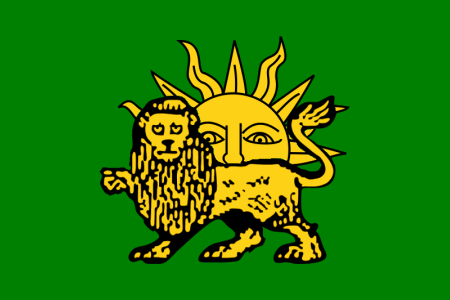
In 1515 too in this story, both Byzantines and Safavids would agree that to seal their alliance, they would have to destroy the still surviving independent Byzantine Empire of Trebizond in Northeast Asia Minor along the Black Sea coast, and thus by the end of 1515 the Byzantine and Safavid troops together would march into the city of Trebizond and capture it. With Trebizond having fallen, the Empire of Trebizond that had been around for more than 300 years since 1204 had fallen, thus the city of Trebizond itself would return to Byzantine rule while the countryside surrounding it would fall under the Safavids, and as for the navies of the Venetians, Genoese, and Portuguese assisting the Byzantines in attacking Trebizond by sea, they would get their own naval bases along the Black Sea near Trebizond.




On the other hand, during the 1510s more developments had been taking place in the rest of Europe such as for instance in 1512 when the Polish scientist living in Italy Nicholas Copernicus published a work proclaiming that the sun and not the earth was the center of the solar system which shocked many as for centuries people believed it was the other way around, however this work would not be fully published until Copernicus’ death in 1543. In 1513 on the other hand, another important work was published and this was The Prince by Italian philosopher Niccolò Machiavelli which was on the political philosophy of that time.
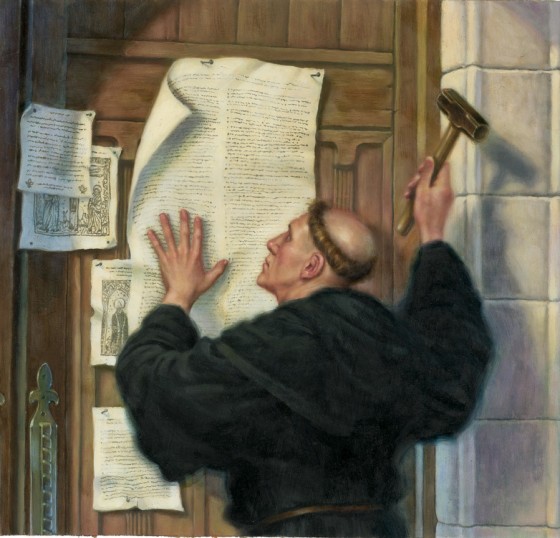
Then in 1517, one major movement had begun which would eventually change the course of Europe’s history, and this was the Protestant Reformation beginning in Germany led by the German theologian Martin Luther who on October 31 of 1517 posted his 95 Theses on the door of the Wittenberg Cathedral in Germany, and from here on many would join his religious cause no longer wanting to follow the Catholic Church believing it was corrupt with beliefs that no longer made sense. Now, even before Martin Luther there had been movements in Europe that were intended to separate from the Catholic Church but none were really as successful until Luther’s in 1517 as here many especially from parts of Europe like Germany, the Netherlands, and Denmark which were more distant to the Catholic center being Rome felt that they wanted to be independent considering that the Church in Rome was too far away. Eventually, not only common people would join this Protestant Reformation but the nobles of the Holy Roman Empire too which would thus later on cause difficulty for the Holy Roman Empire itself challenging the authority of the Holy Roman emperor; and since Luther had begun translating the Bible into German, more and more people could understand it thus making them rely more on what was written in Sacred Scripture centuries ago than on what the Church in Rome had to say.

Now Charles of the Habsburg Dynasty, the son of Duke of Burgundy and King of Castile Philip I who died in 1506 and Queen Joanna of Castile had grown up not in Spain but in the Holy Roman Empire and in 1515 he became the Duke of Burgundy taking his late father’s place while assuming control over the Netherlands too and in the following year 1516 his maternal grandfather King Ferdinand of Aragon and of the united Spain who too was the same husband of Queen Isabella of Castile- who died back in 1504- after a very long rule had died. With Ferdinand and Isabella’s daughter Joanna being unfit to rule due to suffering a nervous breakdown after her husband died that caused her a mental illness, there was no one left to inherit the Kingdom of Spain but her 16-year-old son Charles who in 1517 set foot in Spain for the first time to rule it as its king despite hardly knowing anything about Spanish customs and hardly even speaking or even understanding the Spanish language. As the King of Spain, Charles was known as “Carlos I”, although due to not knowing much about Spain’s culture and language, he began his reign unpopular wherein his people could not understand his way of thinking considering he was raised in Germany while he also could not understand what his Spanish subjects wanted.

After just 2 years of being Spain, Charles had to be recalled back to the Holy Roman Empire in Germany in 1519 as his grandfather Holy Roman emperor Maximilian I had died and thus back in Germany, Charles was first elected as King of Germany and later as Holy Roman emperor Charles V after Charles bribed the German nobility to elect him, and now he ruled two powerful nations being Spain and the Holy Roman Empire itself in which his parents and grandparents intended for him. On the other hand, Charles was not the only ambitious young ruler in Europe as France also had one being their king Francois I of the Valois Dynasty who became King of France back in 1515 succeeding his father-in-law the former King of France Louis XII after the latter’s death, and now Charles V and Francois I would end up becoming great rivals for dominance over Europe.

Francois I on the other hand had turned out to be not only a strong warrior but a highly cultured king who admired the Italian Renaissance that he even invited Leonardo da Vinci to France, although in 1519 Da Vinci died in France after quite a short stay there. As for Charles in 1519 before becoming King of Germany and Holy Roman emperor in 1521, while still in Spain he sponsored the voyage of a new rising explorer which was the Portuguese Ferdinand Magellan who after falling out with the Portuguese king and being banished from Portugal had to ask the King of Spain being Charles to sponsor his voyage as he wanted to finish off where Columbus left off in actually finding a way to Asia by sailing across the Atlantic, and due to the Spanish having already discovering the Pacific Ocean in 1513, Magellan thought that by sailing across it, you could finally reach Asia, and thus circumnavigate the earth. Now although Charles was in control of both Spain and the Holy Roman Empire, he began his reign over the Holy Roman Empire in 1519 greatly troubled especially due to the spread of Protestantism in Germany, and in 1521 Martin Luther himself defended his theses at Worms in Germany in front of Charles V and with Luther refusing to recant his beliefs, Charles together with the pope as well declared Luther’s movement heretical thus Luther was excommunicated and the first war between Catholics and Protestants in Germany began. Byzantium in this story as a Catholic power would not really have any say on the reformation due to Germany being quite distant from them, although the emperor here Constantine XII would instead just have to agree with the Catholic Church’s stand and also see Luther’s movement as heretical in order to maintain good ties with the Church of Rome. Charles meanwhile as the year 1520 came would not only have to face the spread of the Protestant Reformation in his lands in Germany but war with France over control of Italy too, although in 1522 Charles returned to Spain spending the next years there and here, he would begin growing more accustomed to the lifestyle and culture there while even becoming more and more fluent in the language thus eventually gaining the loyalty of the Spanish people.

In the meantime too, Spain was the one making progress in the 1520s when it came to explorations and conquests beyond Europe as for one from 1519-1521, the Spanish general and conquistador Hernan Cortes led the conquest of Mexico from the powerful Aztec Empire which the Spanish in just 2 years finished it wherein Cortes captured the Aztec capital Tenochtitlan in 1521 destroying it and rebuilding it as Mexico City, the capital of the Spanish province of Mexico or “New Spain” making it another addition to Charles V’s already massive empire. Other than Cortes, the expedition force of Magellan mostly made up of Spaniards despite its leader being Portuguese by 1520 made it by sea to the Pacific Ocean by travelling all the way south down the continent of South America coming out into the Pacific Ocean, and having much more advanced ships compared to those used by Columbus decades earlier, the fleet of Magellan managed to cross the entire Pacific Ocean itself which was many times larger than the Atlantic Ocean. However, they at first believed that the Pacific was only a short sea wherein they could reach Asia within only a few weeks, but at the end they were proven wrong as it took them several months before sighting land again, and by 1521 they finally reached a part of Asia being the Philippines coming from the opposite direction being the east.

Not too long after encountering the Philippine islands, Magellan himself was killed by natives at the Battle of Mactan in today’s Cebu in 1521 as well leaving the surviving members of his expedition to take the risk of returning back to Spain by heading west despite that route already owned by the Portuguese. Eventually later on in 1521, Magellan’s fleet now led by Magellan’s second-in-command the Spanish Juan Sebastian Elcano after encountering the Spice Islands and later Malacca, they came to realize the earth was round as the Portuguese had already set foot there passing the other direction coming from the west some years earlier, and by the time the fleet led by Elcano returned to Spain by 1522, they had achieved the first tested circumnavigation of the earth. With both the conquest of Mexico and the first circumnavigation of the earth, Charles V gained quite a lot of prestige, and with Spain’s conquest of Mexico, the first cacao and vanilla beans being products only native to the Americas were first introduced to Europe, and many happened to be fond of it. In this story’s case, the Byzantines too would encounter these new products from the Americas and would eventually develop a habit of mixing cacao which was made into chocolate and vanilla into their desserts and drinks, however due to very small quantities of it being shipped to Europe from the Americas, only the rich could have access to it, though with vanilla and cacao being in demand in Europe, Spain’s economy would continue to grow due to trading these New World products. Though despite Spain’s successes in the New World, Charles acting as both King of Spain and Holy Roman emperor would resume war with France and due to the success of the Spanish troops in the New World considering that they easily defeated the Aztec Empire, Charles relied on them a lot more as they had strong loyalty too compared to his much more disorganized German troops who served German princes that may or may not have been loyal to Charles.

This conflict between Charles V’s Holy Roman Empire and Spain against France did in fact not only involve dominance over Europe but competition over discovering new lands and colonization as well. In response to Charles V’s Spain through Magellan discovering a route to Asia through the Pacific by going under South America and thus the circumnavigation of the globe despite Magellan killed in the process, the King of France Francois I too ordered his own expedition to discover another route bypassing the Americas to reach Asia through the Pacific. Here, Francois I in 1523 organized this expedition led by the Italian explorer Giovanni Verrazano doing it in the name of France, and true enough Verrazano did succeed in being the first European- since Leif Ericsson in 1000- to encounter and set foot in North America, although after reaching what is now the coast of New York in 1524, Verrazano returned to France failing to find a route to the Pacific. The conflict between Charles V and Francois I would then culminate in 1525 at the Battle of Pavia in Northern Italy wherein at the end of the day, Charles’ Spanish and German forces won ensuring Charles’ supremacy over Italy while Francois I was even captured and brought to Spain wherein he would be imprisoned until the next year 1526 when returning home to France. Following this, Charles in 1527 finding out that the pope Clement VII also known as Giulio de Medici was actually supporting the French against him would order his Spanish and German troops to sack Rome as an act of punishing the pope; true enough Charles’ troops did sack Rome in 1527 to the point that the pope had to surrender to them, thus this event is suggested as the end of the Italian Renaissance.

Other events now that happened around the world was that for one Sweden in 1523 which was under the Kalmar Union being a joint kingdom with Denmark and Norway which was ruled by Denmark separated from it when the Swedish noble Gustav Vasa drove away the Danes from Sweden and became King Gustav I of Sweden establishing the Vasa Dynasty, while in 1527 the Protestant Reformation had reached Sweden wherein it was accepted making Sweden one of the first Protestant states in the world. On the other side of the world meanwhile, in the Safavid Empire of Persia its founder and first shah Ismail I died in 1524 and was thus succeeded by his son Tahmasp I who would here continue his father’s alliance with Constantine XII’s Byzantium. Over in India on the other hand, the centuries old Delhi Sultanate was defeated in battle by a new Turco-Mongol power from Central Asia in 1525 and in 1526 this new Turco-Mongol power with a Persian culture gained control over Northern India becoming the Mughal Empire which like the Safavid Empire in Persia was another Islamic power that mostly relied on fighting with gunpowder weapons. Now in real history, the Ottomans had reached their zenith in the 1520s under their sultan Suleiman I the Magnificent, the great-grandson of Mehmed II who in 1526 defeated and annexed the entire Kingdom of Hungary following the Battle of Mohacs where the Hungarians were defeated with their king Louis II killed in it, and as Suleiman’s Ottoman Empire expanded into Europe, it began threatening Charles V too. In this story with the Ottomans non-existent, the Battle of Mohacs would not take place while Louis II of Hungary would still live, and instead the Byzantines would try to maintain peace again with Hungary as Byzantium now was also fearing the growing power of Charles V.

As for the Byzantines, in 1527 they would celebrate the 1,000th year anniversary of the accession of their most influential emperor Justinian I the Great as emperor which took place in 527- if you remember from chapter III- and here the Byzantine emperor Constantine XII would host grand celebrations in Constantinople, and here for the first time in ages Constantinople would have a festive scene wherein people would now wear the bright silk clothes worn in the rest of Europe at that time, while trade with Portugal would introduce Byzantium to exotic silks and spices from India making it more accessible to them too as the Portuguese already held some lands in India at this point. Though just a year after the grand celebrations in Constantinople in 1527, their emperor Constantine XII in 1528 just like his father Andreas back in 1502 would meet an untimely death too while having no wife or children as in his entire reign he had not married. Not to mention, in 1528 as well, the same Italian explorer serving France Giovanni Verrazano had also died although his death was very gruesome yet very strange as here when doing his second voyage to the Americas from 1527-1528, he arrived in one of the Caribbean Islands wherein he was killed by natives and afterwards eaten by them, thus he again failed to find another route to reach Asia from the Americas. In Byzantium meanwhile, Emperor Constantine XII met his sudden end in 1528 from a horse riding accident falling off his horse as he was riding right next to a cliff somewhere in Asia Minor, and without children the position of emperor was left to his younger brother by 8 years Justinian; and Constantine XII despite being rather weak as an emperor did fulfil his duties as his uncle Isaac was really the power behind him, although now the new emperor was to be someone with more ambition than his brother.

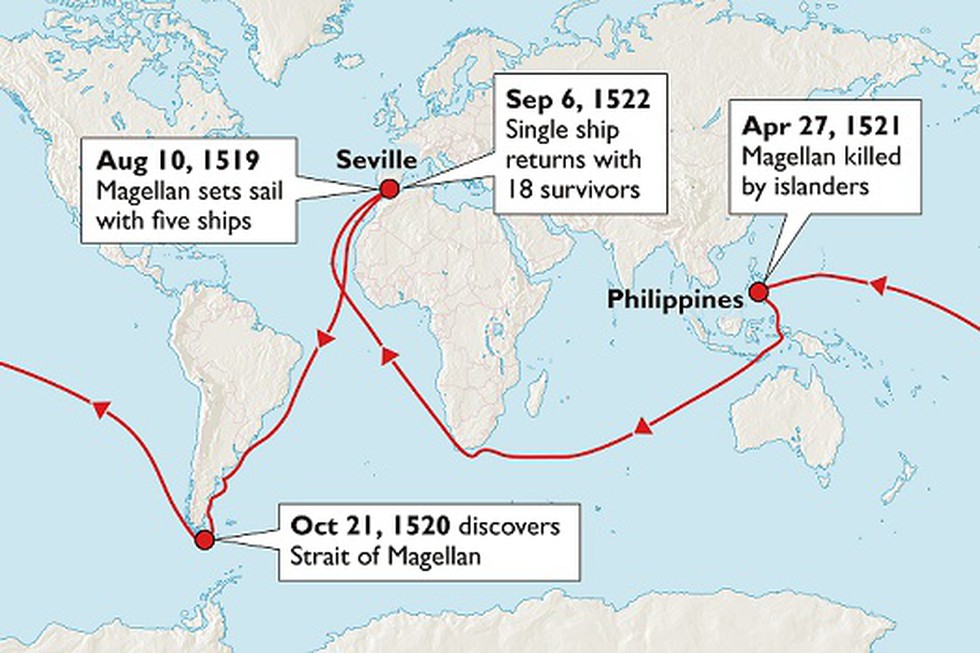


The Reign of Justinian III and the Palaiologi of Monteferrat (1528-1532)

Following the untimely death of the Byzantine emperor Constantine XII Palaiologos in 1528 after falling off his horse at 41 without any children, his younger 33-year-old brother Justinian III Palaiologos succeeded as emperor.
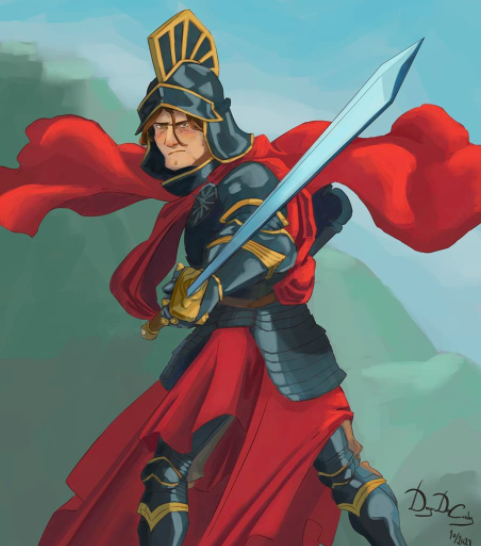
The new emperor Justinian III was very strong and energetic being tall with a muscular built and long black hair, however despite all the ambition and energy he had, he lacked the political skills in ruling especially when it came to managing an empire and its finances, thus again it would be left to his old uncle Isaac to do the job of taking care of the finances and keeping the empire together now that it had expanded a lot more compared to the state Byzantium was in after the recapture of Constantinople from the Ottomans in 1458. As emperor, Justinian III’s main objective was to basically live up to his namesake being the great 6th century emperor Justinian I the Great as true enough for so many centuries the name “Justinian” never really appeared much in Byzantine history and it had been over 800 years since Byzantium had an emperor Justinian which was Emperor Justinian II of the Heraclian Dynasty (r. 685-695/ 705-711).

This Justinian II was also a highly ambitious emperor that also tried to live up to his namesake which was Emperor Justinian I but failed to as his overambitious style of ruling led to his downfall in 695 when he was deposed with his nose chopped off, and although he returned to power in 705 basically to have revenge on those who wronged him before, he met his bloody end in 711 being beheaded. Now in the 16th century, Justinian III although wanting to live up to Justinian I did not want to repeat the same mistakes Justinian II made and thus Justinian III chose to rule carefully and not let his passions get the best of him, however as an act of imitating Justinian I, Justinian III when coming to power unwisely spent the empire’s money on beautifying Constantinople to celebrate the 1,000 years since Justinian I’s reign, rather than spending the funds on the army or rebuilding roads across the empire. Just like his late older brother Constantine XII though, Justinian III too was unmarried despite being already 33, and thus when beginning his reign, he was already in search of a wife wherein his preferred choice was either an Italian or French noblewoman. Now back to Charles V of Spain and the Holy Roman Empire, ever since 1526 he had been married to the Portuguese princess Isabella which thus allied Spain and Portugal making the Portuguese in this case not take their alliance with the Byzantines seriously anymore as they now allied with a stronger power which was Spain and the Holy Roman Empire combined. With Spain and Portugal now becoming stronger allies due to Charles’ marriage with Isabella of Portugal, Justinian III when coming to power too felt threatened as the Portuguese for decades had been Byzantium’s main naval ally wherein Byzantium benefited from them a lot, however Justinian here chose to deal with things diplomatically by acknowledging Spain and Portugal as allies and further extending their alliance with Portugal by this time giving the Portuguese the island of Rhodes which the Byzantines had some years earlier captured from the Knights of Rhodes, wherein in real history it was the Ottomans that captured Rhodes from these knights in 1522.

On the other hand, in 1529, the intense conflict between Charles V and Francois I of France that was very bitter for years finally came to an end when Francois I’s mother Louise of Savoy and Charles V’s aunt Margaret of Austria met together at the town of Cambrai in Northern France making this event known as the “ladies’ peace”, and here it was formally agreed with Pope Clement VII that Charles V would give up his claim on Burgundy while Francois would give up his claims on Milan and Naples. Following this peace being sealed, Pope Clement VII met with Charles V in Bologna in 1530 now forgiving him for the sacking of Rome in 1527, and only here would the pope formally crown Charles V as the Holy Roman emperor, and this too would be the last time in history when the pope would crown a Holy Roman emperor which had been a centuries-long tradition. Now despite the conflict between Charles V and Francois I over, the ones that actually suffered from it were the smaller Italian states ruled by different noble families including the Marquisate of Montferrat in the region of Piedmont in Northern Italy and the Marquisate of Mantua also in Northern Italy. By 1530, Mantua was ruled by Marquis Federico II Gonzaga who had ruled as marquis since 1519 as an ally of Charles V, and due to his loyalty to Charles V’s Spain and the Holy Roman Empire, Federico in 1530 was elevated in status from a marquis to a duke and so was Mantua elevated from a Marquisate to a Duchy. Now Federico II was someone with a turbulent early life as the son of the Marquis of Mantua Francesco II Gonzaga (r. 1484-1519) and Isabella d’Este, and due to the complex politics in Italy at this time as well as Federico being a son of the rulers of Mantua, as a child from 1510-1513 he was forced to go to Rome and live there as a hostage of the pope then which was Julius II as a way to ensure that Mantua was loyal to the pope.
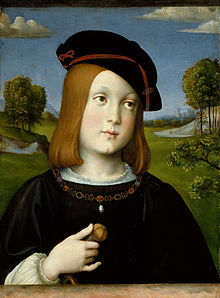
Although returning to Mantua in 1513, Federico from 1515-1517 was sent to France as a hostage of Francois I to also ensure the Gonzaga of Mantua’s loyalty to France at this time. Just 2 years after returning to Mantua, Federico in 1519 became its marquis following his father’s death and in 1521 Mantua’s loyalty shifted to Charles V’s Holy Roman Empire, and being allied to Charles V, Federico fought with him against the French at Parma in 1521 and Piacenza in 1522. In 1521 as well, Federico entered a marriage contract with the small Marquisate of Montferrat in Northern Italy which was under the rule of a branch of Byzantium’s ruling Palaiologos Dynasty which had ruled it for already more than 200 years. Here in 1521, Federico was arranged to marry Maria Paleologa, the daughter of the late Marquis of Montferrat William IX Palaiologos (r. 1494-1518) and sister of the reigning Marquis of Montferrat Boniface IV Palaiolgos which was her younger brother. Federico however never married Maria as in 1528, Pope Clement VII voided the contract, and thus both remained unmarried wherein Maria died in 1530 and Federico seeking for marriage signed another marriage contract in 1530 with Charles V’s 3rd cousin Julia of Aragon, and this was when Charles V elevated Federico’s status from marquis to duke. However, the marriage between Federico and Julia of Aragon never took place as in 1530 in Montferrat their marquis Boniface IV died just like Constantine XII in this story from a horse-riding accident, although Boniface dying at only 17 had no children to succeed him and neither was he married, thus without a ruler in Montferrat Federico saw it as an opportunity to claim it by offering to marry Boniface and Maria’s surviving sister the 20-year-old Margaret Paleologa. Now in Montferrat, although Margaret was the last surviving of the children of the former marquis William IX Palaiologos and his French wife Anne of Alencon, she did not inherit the position of Marquise of Montferrat, instead in 1530 her uncle Giovanni Giorgio Paleologo which was William IX’s younger brother succeeded his nephew Boniface IV as Marquis of Montferrat despite Giovanni having been made into bishop.

As Margaret on the other hand was the last surviving child of Marquis William IX and Anne of Alencon, due to being both young and beautiful while also being an heir to Montferrat, many young noblemen were seeking to marry her including Duke Federico II of Mantua who previously was supposed to marry Margaret’s older sister Maria, and now with Margaret still single and a good choice to marry, Federico again entered a marriage contract with Montferrat in order to put a claim on it considering that again Montferrat would soon face a succession crisis as their marquis Boniface IV had just died while the current marquis Giovanni Giorgio was childless and already close to death with his bad health. In real history, Margaret married Federico II in 1531 wherein her mother Anne who was the power behind her sealed the marriage in order to secure Montferrat and make sure it would not descend into a succession crisis, and out of all the candidates that proposed to marry Margaret, her mother agreed with Federico as she wanted to link Montferrat with the House of Gonzaga of Mantua too, which was also an act to ensure further ties with Charles V’s Holy Roman Empire. In this story however, with the Byzantine Empire still alive and still under the Palaiologos Dynasty which was the same one that ruled Montferrat, the Byzantine emperor Justinian III who was still unmarried would discover the existence of his distant cousins ruling the small agricultural state of Montferrat in Northern Italy, and when hearing that Montferrat had a young single female heir that needed a husband, he would immediately opt to marry her sending his proposal to Montferrat as well as a painting of himself. Now in this story, Margaret’s mother Anne rather than deciding for her daughter to marry Federico II, she would opt for Justinian III of Byzantium as Justinian was a bigger-time ruler compared to Federico and was also a distant cousin as with Margaret being part of the Palaiologos Dynasty, her mother wanted her to marry someone of the same blood as an act to once again unite this illustrious dynasty and bring honor to the Palaiologos name and its legacy.


The Marquisate (March) of Montferrat now had quite an interesting long history established as a frontier march of the old Kingdom of Italy all the way back in around 950 by the King of Italy then Berengar II (r. 950-961) wherein the area of Montferrat was assigned to his son-in-law Aleramo who in 961 assumed rule over this small state following the deposition of his father-in-law by the King of Germany Otto I who here invaded Italy and in 962 became the first Holy Roman emperor- if you remember from chapter VII.
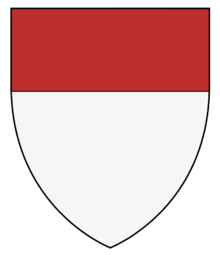
This frontier march in Northern Italy which was first ruled by Aleramo beginning 961 would then become the Marquisate of Montferrat which in addition due to Otto I’s intervention became a frontier march of the new Holy Roman Empire while Aleramo’s descendants being the Aleramici Dynasty named after him would rule it for the next centuries. Montferrat however as well as its Aleramici rulers would remain insignificant for the rest of the 10th century as well as in the 11th century- where chapter VIII of the series was set in- though in the 12th century Montferrat would gain some significance when its marquis William V married the half-sister of the King of Germany Conrad III in 1133, and eventually this William V would not only be involved with Conrad III’s politics in Italy but with Conrad’s dealings with the Byzantine emperor then Manuel I Komnenos (r. 1143-1180)- if you recall from chapter IX– while William’s sons too would be involved in the Crusades during this era. As the 13th century began, Montferrat had a major role in the notorious 4th Crusade as this Crusade’s leader was the Marquis of Montferrat Boniface I who in 1204 was one of the leaders of the Sack of Constantinople by the French and Venetian Crusader armies- if you recall from chapter X- which then temporarily put an end to the Byzantine Empire until its restoration in 1261.

As a result of successfully capturing Constantinople from the Byzantines wherein the Latin Empire took its place ruling from Constantinople, Boniface in return for his part in the 4th Crusade was given control over the Byzantine city of Thessaloniki and its surroundings which then became his own Kingdom of Thessalonica which was although a dependency of the Latin Empire in Constantinople. Boniface I of Montferrat thus based himself in Thessaloniki but only ruled for less than 3 years as in 1207 he was ambushed and killed by the forces of the 2nd Bulgarian Empire, thus control of Thessaloniki passed on to the hands of Boniface’s young son Demetrios who in 1224 lost control of the entire Kingdom of Thessalonica to the separatist Byzantine Despotate of Epirus under Despot Theodore Komnenos Doukas (r. 1215-1230), while in 1246 Thessaloniki returned to the hands of the exiled Byzantine Empire of Nicaea under Emperor John III Vatatzes (r. 1222-1254), in which this exiled empire returned to being the Byzantine Empire in 1261 with the recapture of Constantinople from the Latins wherein the Palaiologos Dynasty was established by Emperor Michael VIII (r. 1261-1282).
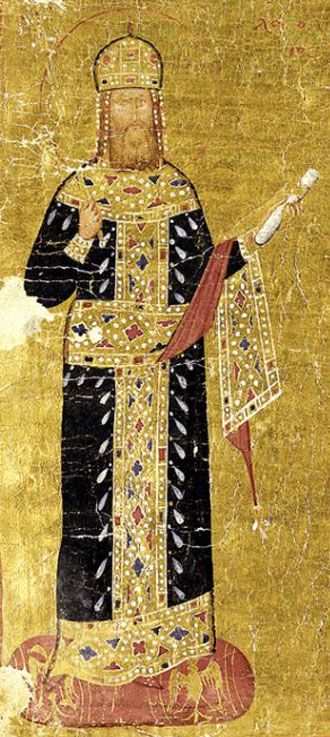
Although Montferrat lost control over Thessaloniki, they still had a claim to the city which was although put to an end in 1284 when the Byzantine emperor Andronikos II Palaiologos (r. 1282-1328), who was the son of the Palaiologos Dynasty’s founder Michael VIII married Yolande of Montferrat, the daughter of the Marquis of Montferrat William VII (r. 1253-1292), and part of the marriage deal with Andronikos was for Yolande to surrender her family’s claim on Thessaloniki- of you recall from chapter XI. Yolande then became the Byzantine empress and together with Andronikos II they had a number of children, and when Yolande’s brother the Marquis of Montferrat John I (r. 1292-1305) died in 1305 childless thus being the last Aleramici marquis of Montferrat, the closest relative to succeed John was his nephew Theodore Palaiologos who was the son of Andronikos II and Yolande, and it was not a problem for Andronikos II’s succession as he already had a son with his previous wife, and through his son with his first wife would his dynasty continue up to Justinian III in this story. The young Theodore in 1306 then travelled to Italy to become the Marquis of Montferrat, and after marrying a Genoese woman he settled in Montferrat’s capital city Casale having children with her and while being an Italian feudal lord, he adapted to the customs and culture of Italy by forgetting his Greek language and speaking Italian instead while also converting from Orthodoxy to Catholicism, although despite changing his identity from Greek to Italian, Theodore still kept some of his Greek heritage by writing a military manual in Greek between 1326 and 1327.
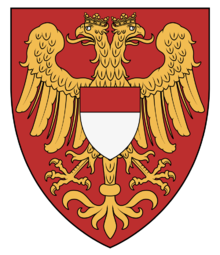
The first Palaiologos Marquis of Montferrat Theodore I died in 1338 and was succeeded by his son John II Palaiologos, and thus their descendants would continue to rule Montferrat although quickly adapting to their Italian identity and forgetting their Byzantine heritage, that their family’s name transformed from the Greek “Palaiologos” to the Italian “Paleologo”, though the only Byzantine element they kept was the Byzantine coat of arms which was thus blended into Montferrat’s coat of arms. The Palaiologos of Montferrat however would be in contact with their cousins in Byzantium in 1421 when the daughter of Marquis Theodore II Palaiologos (r. 1381-1418) which was Sophia married the future Byzantine emperor John VIII Palaiologos (r. 1425-1448) who was the eldest brother of Constantine XI and Thomas, though following John VIII being crowned as emperor he ended up divorcing Sophia who returned to her homeland Montferrat in 1426 where she died 8 years later in 1434. Following this, the Palaiologos rulers of Montferrat were no longer very much aware about the events in Constantinople and Byzantium despite their relatives ruling it, although in this story’s case their marquis John IV Palaiologos (r. 1445-1464) who was ruling Montferrat when the Ottomans took over Constantinople in 1453 and when the Byzantines took it back in 1458 would know about the events there but did not really seem to care about it. Following John IV’s death in 1464 he was succeeded as marquis by his brother William VIII Palaiologos (r. 1464-1483) and after his death was succeeded by his other brother Boniface III Palaiologos (r. 1483-1494) who like in real history here would also marry the Serbian princess Maria Brankovic, and their children would include the next future marquises William IX born in 1486 and Giovanni Giorgio born in 1488.

By the time William IX became Marquis of Montferrat following his father’s death in 1494 he was only a minor and was thus under a few regents until he came of age, and as marquis he pursued a pro-French policy which is why he married the French noblewoman Anne of Alencon in 1508 wherein William here was 22 and Anne only 16, and William even travelled to France himself to marry her, and together with Anne they had 3 children being Maria born in 1509, Margaret born in 1510, and the next marquis Boniface IV born in 1512. William IX then died in 1518 at only 32 while his son Boniface IV who succeeded him was only 6 thus being under the regency of his mother Anne. As mentioned earlier, Boniface died in 1530 from a horse-riding accident and being only 17, he died unmarried and childless- and so did his eldest sister Maria also die this year at only 21- although since the Palaiologos family still had one last male relative alive being Giovanni Giorgio who was although already the Bishop of their capital Casale, he succeeded his nephew Boniface IV as Marquis of Montferrat.

In this story’s case, with Anne of Alencon being the active power behind both her last remaining daughter Margaret and the new marquis her brother-in-law Giovanni Giorgio, she would immediately accept Justinian III of Byzantium’s offer to marry her daughter and so in early 1531, Anne together with her 20-year-old daughter Margaret would leave Montferrat’s capital Casale for Constantinople leaving Giovanni Giorgio to rule it alone as Anne felt that if her daughter was already going to marry the Byzantine emperor who was her distant relative, then they would have no more use for Montferrat anymore, thus Anne here just left her brother-in-law to do whatever he wanted with Montferrat not even caring if their dynasty would end with him considering that Giovanni being a bishop for years was childless. Margaret together with her mother would travel first by land from Casale to Genoa and from there take a Genoese ship to Constantinople for weeks, and considering that the Republic of Genoa was a major ally of Byzantium, the Genoese ship they took brought them directly to the Byzantine imperial capital.

When arriving in Constantinople, Anne and Margaret would be in awe not so much anymore because it was such a great imperial metropolis but because it featured a few thousand-year-old buildings still intact like the Hagia Sophia, Hippodrome, and 5th century land and sea walls. Anne here having already seen great cities at that time like Paris was still in awe with Constantinople because of its position at a peninsula with a scenic harbor while her daughter Margaret would be the one really amazed by the city as for her entire life all she had seen was rural Montferrat and Casale which was such a small city. After arriving at the Byzantine capital, Margaret and Anne proceeded to the imperial Blachernae Palace along the land walls where they met the emperor Justinian III himself together with his top advisor and uncle Isaac. Justinian III when seeing Margaret which was the woman he was supposed to marry that was 15 years younger than him for the first time was at first underwhelmed as he never saw a portrait of her, and when seeing her he found her not very attractive as basically she just arrived and was not really dressed for any occasion, although right after arrival both Anne and Margaret were given their own quarters in the palace. When travelling to Constantinople, Anne brought over from Montferrat some samples of the latest Italian Renaissance women’s fashion to showcase it in Constantinople where it wasn’t very popular yet, and here Anne prepared for her and her daughter gowns made of the finest silks, satin, and velvet, and these gowns brought by them had a new style of large detachable sleeves that were separate from the dress. Now in order to make Justinian III be attracted to Margaret, Anne had her daughter Margaret styled in such a way by curling up her hair and having her dress for the occasion in one of the gowns that were brought. The outfit that Margaret was dressed up in first consisted of the basic thin white undergarment shirt everyone at this age wore known as the chemise and placed over it was a thick sleeveless wool dress with a low square neckline called a petticoat which was fastened tightly around her body by lace at the back to give it support and an attractive shape with her bust somewhat flattened and pushed upwards, and over that was the embroidered outer dress known as the kirtle wherein the jewels around the neckline were found, then attached to the outer-gown were the large detachable sleeves, while several accessories were added as well including pearl earrings and a golden necklace.

With Margaret fully dressed up, her mother then proceeded to fix her up even more by herself to make her daughter look more attractive and to do this Anne tucked her daughter’s thin white undergarment deep into the petticoat and gown in order for it to not be seen and thus give Margaret more of a low square neckline, while Anne also pushed down her daughter’s sleeves by tucking it beneath her armpits and pushing the petticoat’s straps down to expose her shoulders and give the dress a wider neckline while she had pushed her daughter’s breasts upwards too, and as the end result Margaret’s shoulders and upper chest as well as upper back were exposed when wearing the gown whereas Anne also had the same look as her daughter here wearing the same kind of design by having her upper chest and shoulders shown as well. Following this, Justinian III saw both the 39-year-old Anne and her 21-year-old daughter Margaret looking very attractive in these gowns, and thus he changed his mind about Margaret when seeing her all dressed up. The young Margaret having a mix of Italian, French, and even Serbian blood through her paternal grandmother and of course Byzantine Greek blood from her Palaiologos ancestors was someone with quite attractive looks having clear skin, a fleshy face as well as a fit body, reddish-brown hair, and green eyes, but the thing about her that attracted Justinian the most was her voice as Margaret in this story’s case sang well. However, Margaret was really lacking in intelligence especially when it came to ruling as all of that was taken care of by her intelligent mother Anne who was the brains behind her and prior to that the brilliant mind behind her late son Boniface IV and late husband William IX, however things were much easier for Anne then as all she was just in charge of was the small state of Montferrat unlike here beginning 1531 wherein she would have some control over a much larger power being Byzantium the moment her daughter marries the emperor. True enough after some 2 months of getting to know each other, Justinian III married Margaret at the Hagia Sophia of Constantinople now a Catholic cathedral later on in 1531 wherein the Archbishop of Constantinople who replacing the long-abolished position of Patriarch of Constantinople married them. This marriage although bonded together two of Andronikos II’s descendants but it still was not a marriage that united two great empires, the way it should have been in 802 if the Byzantine empress Irene of Athens (r. 797-802) married the Frankish emperor Charlemagne (r. 768-814)- if you recall from chapter VI.


Back in Italy meanwhile, the Duke of Mantua Federico II Gonzaga would be enraged when learning that Margaret Paleologa of Montferrat turned down his marriage proposal and instead chose to marry the emperor in Constantinople. Reacting to this, Federico here would reenter his previous marriage contract with Charles V’s cousin Julia of Aragon and they would thus marry later in 1531, therefore further sealing the alliance between Mantua and Charles V’s Holy Roman Empire and Spain.
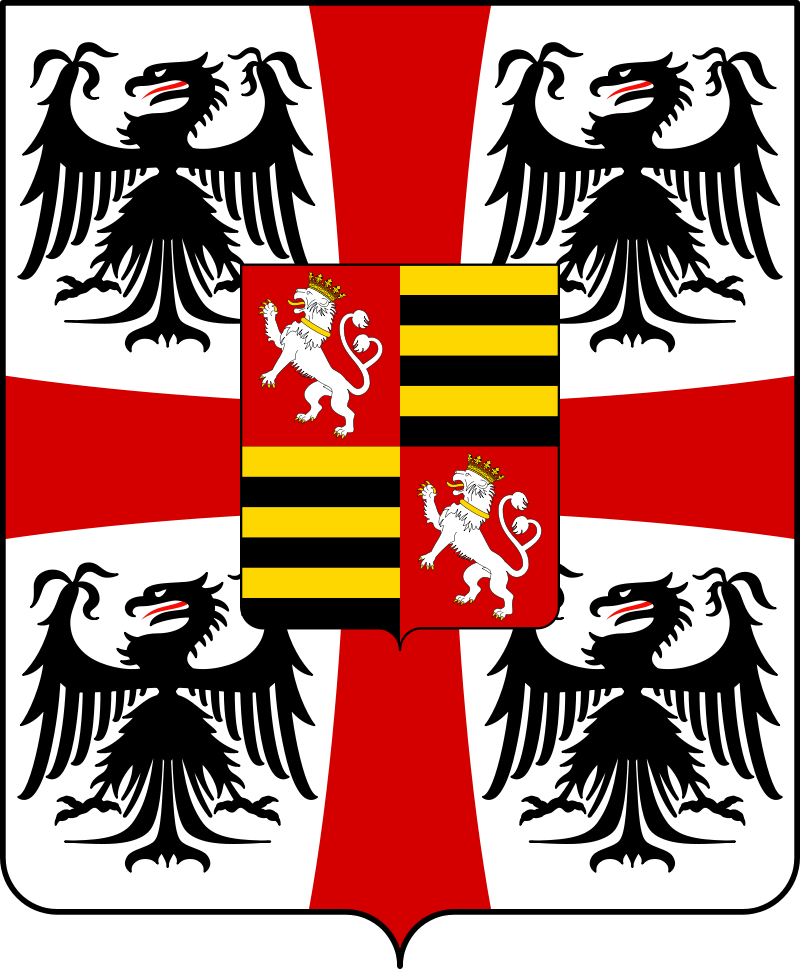
In this story’s case, Federico would convince Charles to invade Byzantium for their emperor grabbing Margaret and marrying her before Federico could, and Charles here would agree to it not because of simply listening to his puppet Duke of Mantua Federico but because Charles feeling that he was the primary defender of the Catholic faith felt that Byzantium despite having converted to Catholicism did not really mean it since many of its subjects were still Orthodox, thus giving Charles a valid reason to invade it. Meanwhile in the wider world, more developments have taken place as the 1530s began and one of the most important ones happened in England as from 1531-1532 England too joined the Protestant Reformation, though establishing its own Church known as the Church of England and breaking away from the Catholic Church, and this Church was founded by the King of England Henry VIII of the Tudor Dynasty who was the son and successor of the Tudor Dynasty’s founder Henry VII (r. 1485-1509)- who was mentioned earlier- and with Henry VIII being the head of the Church of England, the rulers of England after him would be its leaders too.
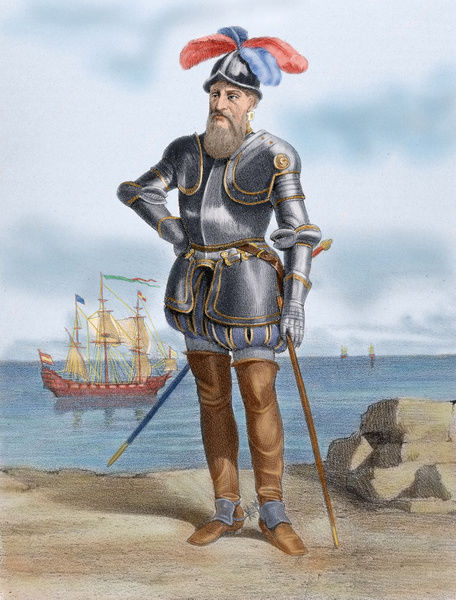
Other than that, the Spanish too had made further progress in the Americas which was particularly their conquest of the entire Inca Empire in Peru and other parts of South America led by the Spanish general Francisco Pizarro in 1532. Now due to Spain’s conquest of Peru, more new products from the Americas unknown to the Europeans were brought to Europe for the first time similar to how it was 10 years earlier when the Spanish conquered Mexico. Previously, when Spain conquered Mexico 10 years earlier, new products taken from there that were introduced to Europe included cacao beans which would be made into chocolate and vanilla as well, though this time with the conquest of Peru, the new products that would be introduced to Europe would include potatoes and tomatoes, thus it was only here at this point in history when Europeans would first put tomatoes and potatoes in their diet and thus plant these products in Europe. With Peru as well as a lot of South America now under Spain’s rule, Charles V’s empire grew even more, but the products from South America too in this story’s case would travel even further by reaching Byzantium itself.

Here, as potatoes and tomatoes would be introduced to Constantinople, they would be served at an imperial banquet mixed into their grilled meat dishes and those that would get to taste it including the emperor Justinian III as well as his new wife Margaret and her mother Anne would find it delicious and something that was missing in their diet for millennia. On the other hand, Byzantium’s most powerful ally being Portugal would in 1532 like in real history establish their first permanent settlement in Brazil being the coastal town of Sao Vicente, and with them being allies with Byzantium, this newly established Portuguese colony would be inhabited by Byzantine citizens as well, and thus here would begin Portugal’s full colonization of Brazil. Although the Portuguese and Byzantines here still remained allies, Portugal having ties with Charles V as he was in fact married to the Portuguese princess Isabella who was the sister of the current King of Portugal Joao III was in this story forced to break their alliance with Byzantium and instead join forces with Charles otherwise Charles would fully invade Portugal and seize all their colonies too.
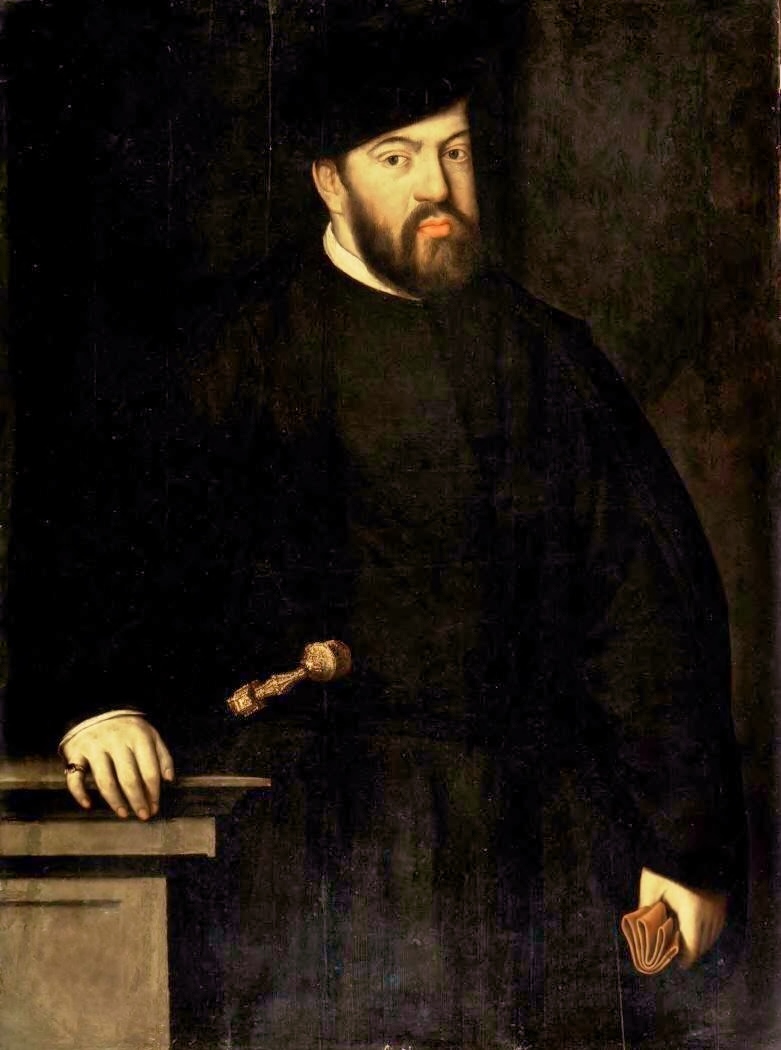
The Portuguese king Joao III who was Charles’ brother-in-law and not really a strong ruler then in fear of losing his kingdom was forced to betray Justinian III of Byzantium and join forces with Charles who was already preparing an invasion of Byzantium, and thus later on in 1532, all Portuguese ships left their bases in the Byzantine Empire. Justinian III now was greatly enraged with Portugal’s sudden betrayal after being a loyal ally for almost 80 years, but he certainly knew that Charles V who was here Europe’s most powerful man was intent to invade Byzantium knowing that Charles’ motto was that he would stop at nothing. With no time to waste, Justinian III with assistance from his uncle and advisor Isaac and mother-in-law Anne of Alencon turned to strengthening their alliance with the Safavid Persian Empire to the east under Shah Tahmasp I, although here Isaac suggested to Justinian to form an alliance with the rising power of Moscow under Prince Vasily III who was in fact Justinian’s first cousin considering that Vasily’s mother Zoe was the sister of Justinian’s father the former emperor Andreas.
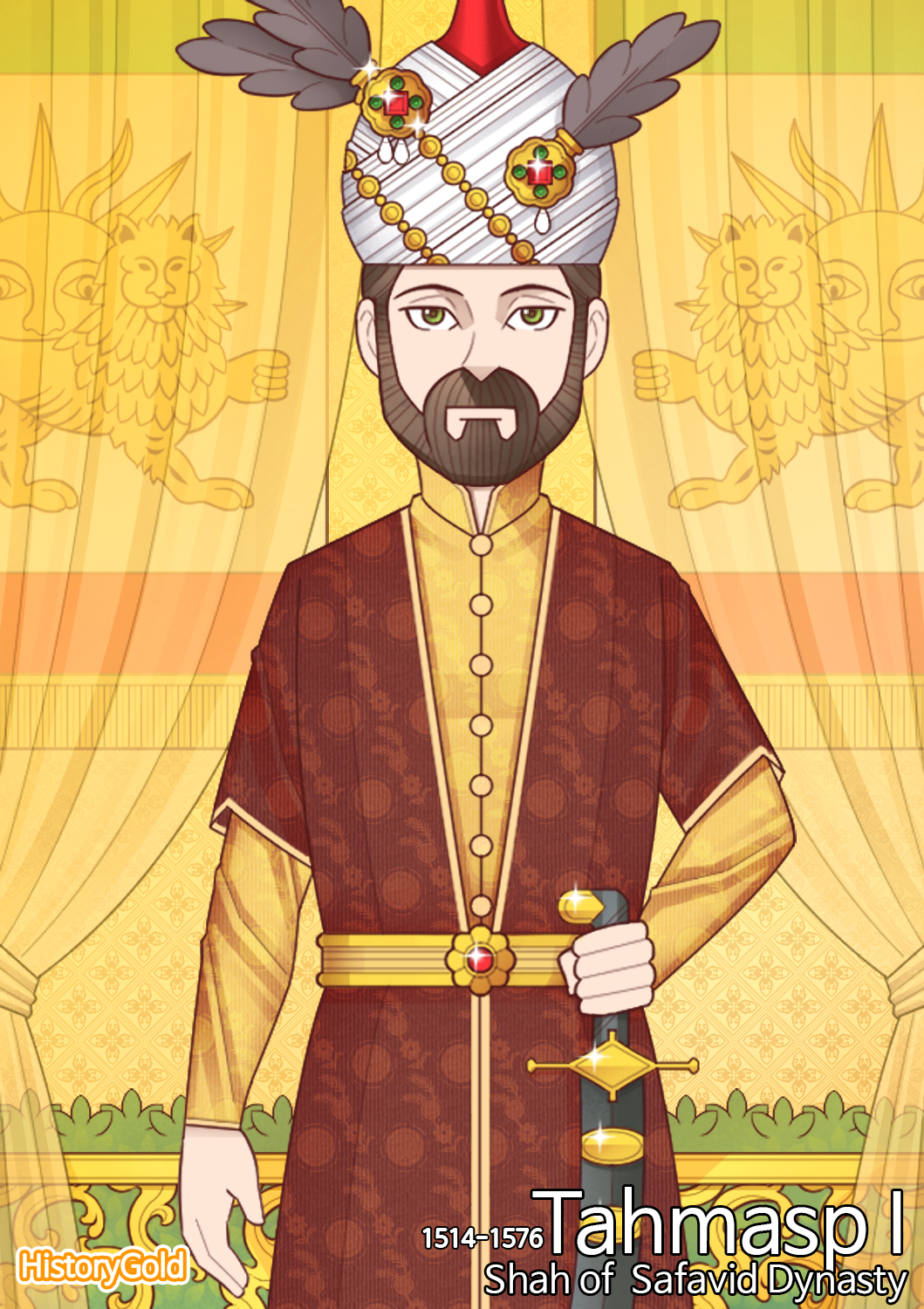
Justinian III however being a man of action never really cared much about reading and writing letters and instead just signed them without even properly reading them, and so here he just had Isaac write the letter to Vasily III of Moscow asking for a military alliance while Justinian just signed it without even reading what Isaac wrote in it. Now ever since Margaret married Justinian III, her mother Anne was basically the one advising her son-in-law Justinian especially in forming alliances while Margaret being the new empress did not really do anything much but rather just enjoyed herself especially in bathing at her own baths in the palace which was an ancient custom the Byzantines still kept which was not very common in Italy where she came from. Now back to Charles V and Federico II of Mantua, as of 1532 they joined forces and set off east to attack Croatia which was part of the Kingdom of Hungary as from Croatia they could launch their naval invasion of Byzantium without having to travel so far.

In real history though Charles V personally led an army in 1532 to confront the Ottomans near Vienna, but the battle did not happen. Here in this story though, with the Ottomans non-existent, Charles would instead invade Hungarian held Croatia by land and with a more superior force of German knights and mercenaries as well as the deadly Spanish Tercios which were the Spanish armies that helped Spain defeat the Aztecs and Incas in the Americas, he would easily capture Croatia from Hungary and there assemble his fleet to sail directly to Constantinople wherein Charles himself together with Federico would join the naval invasion. Over in Byzantium, word of Charles’ massive planned invasion had reached Justinian III and his court greatly worrying them while his mother-in-law Anne knowing of Charles before warned him that Charles was someone dangerous as he was equally hideous with a monstrous appearance of a long deformed chin and large forehead due to being a product of inbreeding, and he was equally dangerous as well as he true enough became Holy Roman emperor by bribing the German nobles or electors and here in this story he managed to get Portugal to turn on Byzantium, thus Justinian III was very worried but he knew there was still some hope as he learned that the Safavid shah Tahmasp I and Vasily III of Moscow agreed to send him troops to battle Charles’ upcoming invasion. Justinian III at the same time knew that the Holy Roman Empire- which was not holy due to being religiously divided, not Roman because no one there really spoke Latin anymore and did not look back at Ancient Rome anymore, and not an empire as its authority was not centralized due to it being a confederation of German princes- again meant trouble as it always did in Byzantium’s history ever since Charlemagne was crowned as emperor of the west in 800, thus Justinian had chosen to fight rather than surrender to Charles as a way to honor his 1,200-year-old empire and its legacy.

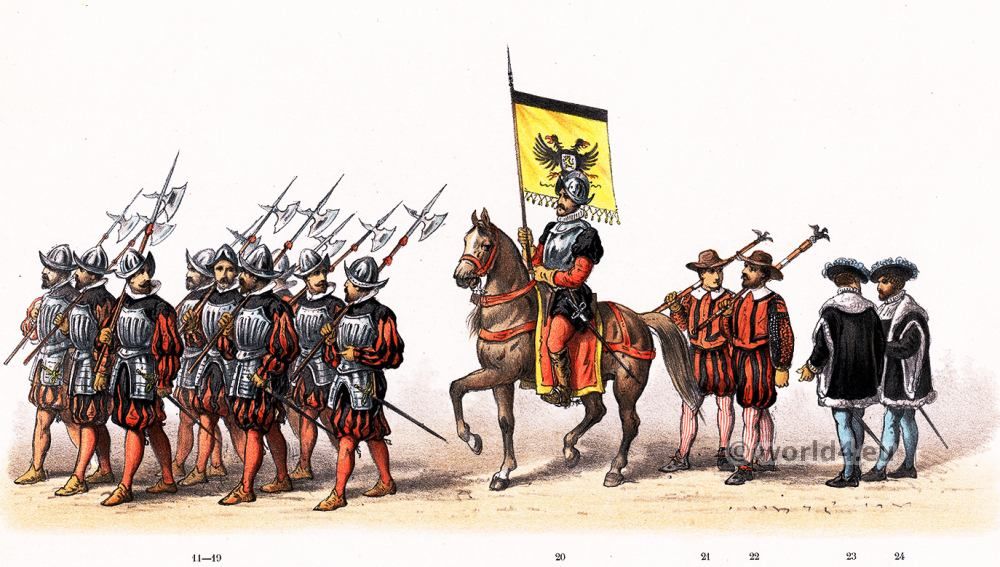
The Climax- The Invasion of Byzantium and the Russian Intervention (1533)

Just like in real history in 1533, the Marquis of Montferrat Giovanni Giorgio had died without an heir here, although in real history since his niece Margaret married Federico II Gonzaga of Mantua, she inherited Montferrat following her uncle’s death in 1533 despite already being in Mantua, though in real history Margaret held the title of Marquise of Montferrat- despite not even being in Montferrat- for only 3 years thus making her the last Palaiologos to rule over Montferrat as in 1536 her husband in real history Federico was given the title of Marquis of Montferrat while being Duke of Mantua at the same time, therefore establishing the rule of the Gonzaga over Montferrat.

In this story however with Margaret having already married the Byzantine emperor Justinian III, she would not succeed her uncle Giovanni Giorgio who in this story would also die in 1533 as well at only 45 due to his bad health, and here with Margaret already in Constantinople no one would be left to succeed the childless Giovanni Giorgio, therefore here the Holy Roman emperor Charles V would give control of Montferrat to Federico II of Mantua. In this story though, Federico would not go to Montferrat himself as when hearing that Giovanni Giorgio had died, Federico was already with Charles in Croatia preparing their invasion of Byzantium by sea, thus here when hearing of Giovanni’s death Charles would just give the title of “Marquis of Montferrat” to Federico while in Croatia.

Now, Charles’ naval invasion consisting of over 500 large and powerful Spanish ships equipped with cannons, which were the same ones that could in fact sail across the ocean to the Americas would take off from the port of Zara in today’s Croatia- the same one the 4th Crusade captured in 1202 where they set sail from to invade Constantinople then- and here the 500 ships together with the armies in it consisting of the highly trained and equipped Spanish tercios and German troops from the Holy Roman Empire would be under the command of both the Holy Roman emperor/ King of Spain Charles V and Federico II of Mantua. Both leaders now had their own strong reasons to invade Byzantium with Charles’ being that he felt Byzantium still had not fully converted to Catholicism making him want to destroy them more and Federico’s being that he felt betrayed by Margaret who was supposed to marry him, and with their reasons combined they would really take the invasion very seriously. Before Charles’ fleet would arrive in Byzantine waters though, Justinian III being already informed about it already prepared his troops and fleet by sailing all of his Byzantine fleet from Constantinople to the mouth of the Dardanelles strait into the Aegean in order to defend the only way by sea to Constantinople.

Here, with the Byzantine ships not powerful enough to face Charles’ mighty Spanish armada, Justinian III had his allies being the Italian republics of Genoa and Venice assist his fleet at the entrance to the Dardanelles as their ships were more powerful than that of the Byzantines, however not as powerful compared to Charles’ Spanish fleet. As for Charles’ fleet meanwhile, following its departure from Zara, after sailing south, it landed on the Greek islands of Corfu and Cephalonia in the Ionian Sea which Charles’ troops captured in order to be used as bases, and following the capture of these islands, the fleet sailed beneath the Peloponnese Peninsula of Southern Greece heading to the Duchy of Athens to gather reinforcements, as in this story’s case the Duchy of Athens was still under Aragon which was now under Charles’ Spanish kingdom. After gathering reinforcements from Athens, Charles’ fleet now headed straight into the Aegean ready to face the Byzantines with their Venetian and Genoese allies, however the Portuguese which were supposed to be allied with Charles here had not yet arrived to assist the invading fleet. The Byzantine fleet itself with their emperor Justinian III himself aboard one of the ships now finally confronted the powerful armada of Charles V at the Aegean off the coast of Northwest Asia Minor, and due to the Spanish fleet having much larger ships equipped with more cannons, they were able to sink tens of the smaller Byzantine, Venetian, and Genoese ships by the use of the cannons alone.

After losing several ships, Justinian III ordered a retreat back into the Dardanelles and thus into the Sea of Marmara while the Byzantine, Venetian, and Genoese ships that were not able to make it into the Dardanelles in time were destroyed by the massive Spanish ships while their surviving crews were either slaughtered by the Spanish tercios who fired their rifles at the crews of the Byzantine, Genoese, and Venetian fleets, while those who escaped the slaughter were captured and taken as prisoners by Charles’ troops. Following this victory over the Byzantines and their allies at the Aegean, Charles ordered half of his fleet under Federico to chase the remaining Byzantine, Genoese, and Venetian ships that fled into the Marmara while Charles and half of the fleet would dock along the coast of Asia Minor, and after docking half of the fleet at the coast, Charles ordered his troops being both the Spanish tercios and German armies to pillage it just to show that he was now fully invading Byzantine lands. Meanwhile as Charles remained docked along the coast of Asia Minor as his troops went inland to raid it, he was waiting for his Portuguese reinforcements which were taking forever to arrive all while Justinian III was waiting for his Russian allies sent by his cousin Vasily III of Moscow coming from the north, although Justinian knew it would take some time for them to arrive as the Principality of Moscow was very far away and did not really have access to the Black Sea in the south, thus to reach it they would have to sail down the rivers of Russia. As for Margaret she had remained in Constantinople all this time enjoying herself as usual while the war against Charles’ empire was ongoing nearby, although her mother Anne of Alencon together with Justinian’s top advisor Isaac were continuously writing letters to generals across the empire and to their allies being Moscow and the Safavids, making sure they would arrive in time to successfully expel Charles’ invasion.

Although the Russian troops from Moscow had not arrived yet, the Safavid troops sent by their shah Tahmasp I had arrived as the Safavid Empire was actually closer to Byzantium than Russia was, and so as Charles’ Spanish and German troops had been pillaging Byzantine Asia Minor, they were suddenly ambushed by the Safavid cavalry and gunners from the hills together with Byzantine gunners and crossbow archers. Now, Charles V’s army despite being more superior to the Byzantines and Safavids in weapons and armor- as true enough Charles’ army had the finest swords made of Spanish steel and accurate firearms- were not familiar with the rocky and hilly terrain of Asia Minor while the Byzantines were as that was their homeland, and the Safavids were familiar with it too as the landscape was similar to where they came from which was Iran. Additionally, Charles’ troops having heavy armor as well as heavy weapons made them move slow allowing the Byzantine and Safavid troops which had lighter arms and armor to quickly surround and ambush them.

At the end of the day, the Safavid cavalry and gunners together with the Byzantine riflemen had totally decimated the powerful army of Charles V in Asia Minor, and thus the Safavid Persians being descendants of the Sassanid Persians that were almost a thousand years earlier the Byzantines’ mortal enemy had redeemed their ancestors by actually saving Byzantium from a deadly Western invasion being Charles’ invasion. However, Charles’ invasion of Byzantium was not yet over as half of his fleet under Federico was still at the Marmara set to invade Constantinople itself by sea, however as the fleet led by Federico arrived at the Byzantine port of Kyzikos along the Asia Minor coast of the Marmara, Justinian III with his fleet including Venetian and Geneose allies arrived again in a surprise attacking and cornering the invading fleet. Charles’ fleet though being the more superior one still managed to destroy many Byzantine, Venetian, and Genoese ships to the point that Justinian III was already worried that Constantinople would fall, but to the surprise of both opposed forces, the Portuguese navy had suddenly shown up arriving from the other side coming from the Aegean, and as they approached the scene of the battle, they began firing their cannons not at the Byzantines and their allies but on Charles’ fleet.

The Portuguese have now after all still remained loyal allies to the Byzantines as they were simply just told by Charles to betray Byzantium and join his forces, but after all in this story Portugal never wanted to turn against their long-time ally, and just like in the case of chapter XII in 1458, the Byzantine victory over another power was again mostly due to the assistance of Portugal. Here in the battle against the Portuguese fleet, many of Charles’ ships were sunken while its leader Federico II of Mantua himself was killed in battle against the Portuguese when his ship was attacked and boarded by Portuguese troops wherein Federico himself was killed as he himself fought by using his sword against the Portuguese soldiers, and as Federico was duelling one Portuguese soldier with his sword, another one shot him at the head from behind with a rifle, thus instantly killing him, and following his death his ship blew up when another Portuguese soldier with his rifle shot one of the gunpowder barrels at his ship.
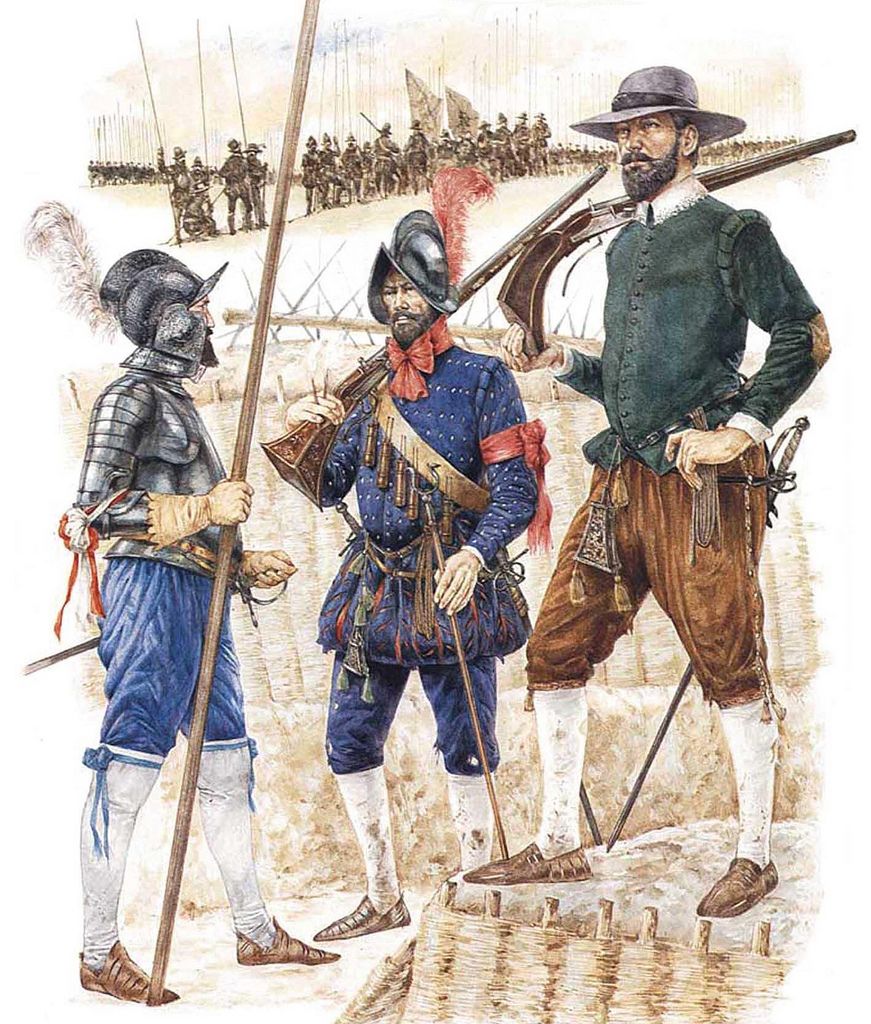
With Federico being killed, the rest of the fleet of Charles fled the scene to meet up with Charles himself, and as the survivors met up with Charles, Charles feeling that he could no longer continue the invasion after also discovering that his troops were ambushed by the Byzantines and Safavids in Asia Minor ordered a retreat. With Federico’s death too, both Mantua and Montferrat fell into chaos as they plainly had no more leader as Federico himself in this story’s case had no children despite having already been married to Charles’ cousin, thus when returning back west, Charles while in his ship decided that his cousin Julia who was the late Federico’s wife would for the meantime inherit both Montferrat and Mantua ruling as duchess of both states. Meanwhile, the victorious Justinian III together with his Venetian, Genoese, and now Portuguese allies that just returned their support to him travelled with him back to Constantinople where Justinian himself was given a triumphal parade for his victory over Charles’ invasion that was thought to have once and for all ended the Byzantine Empire. The Safavids for assisting them too were included in the victory parade at Constantinople’s main street, the Mese ending at Constantinople’s Hippodrome, and for the next week great celebrations were held for this victory.

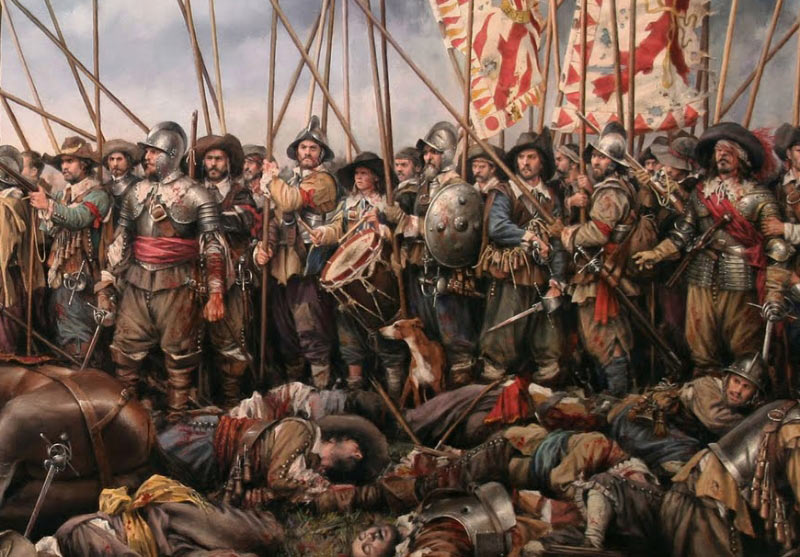
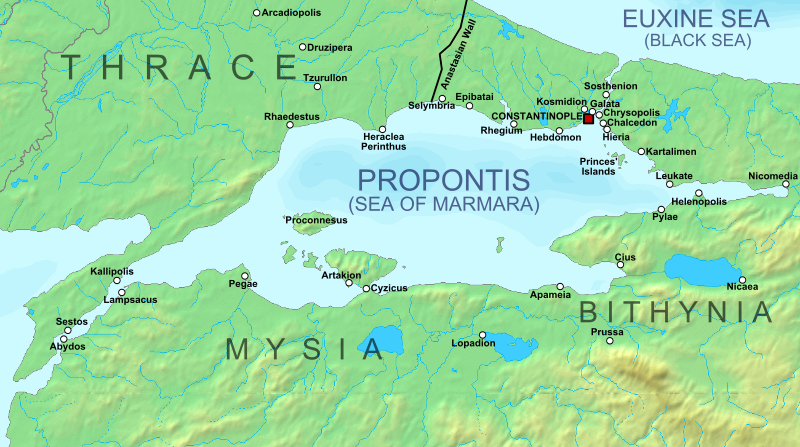
Although the Byzantines had won a major victory and had crippled the mighty empire of Charles V, over in Russia the Grand Prince of Moscow and Emperor Justinian III’s cousin Vasily III Ivanovich who was supposed to assist the Byzantines had just assembled his forces right after the Byzantines had won their victory.

As the Grand Prince of Moscow, Vasily III had ruled successfully for the past 28 years ever since he began his reign in 1505, and under his rule Moscow expanded its territory by annexing other Russian provinces under different Russian rulers as well as parts of Russia still held by the breakaway Mongol states since the 13th century, although as mentioned earlier he was unsuccessful in battle against the Polish-Lithuanian Commonwealth as against them his forces suffered a heavy defeat at the Battle of Orsha in 1514. Vasily III’s rule although long was somewhat uneventful, though he still proved to be a strong ruler with strong support by the Russian nobility or boyars, however in this story’s case Vasily saw himself as the rightful Byzantine emperor and not his cousin Justinian III as Vasily and the Russians themselves were purely Orthodox whereas Byzantium had already become Catholic. To assert himself as the rightful Byzantine emperor due to his mother Zoe being a Byzantine princess and in this story’s case in fact the daughter of the Byzantine emperor Thomas Palaiologos, Vasily adopted the title of tsar meaning “emperor” or “Caesar”- despite not being officially crowned as one- and more shocking to the Byzantines the Byzantine double-headed eagle as his symbol; although in real history with Byzantium no longer existent in Vasily III’s time, he adopted the title of “tsar” and the double-headed eagle symbol anyway.

Now in this story, Vasily III true enough when assembling his army did not assemble it to assist the Byzantines and his cousin Justinian III against Charles V’s invasion but to actually invade the Byzantine Empire and take it for himself in the name of Orthodoxy. Vasily here in this story’s case felt that he had the right reason to send his army south to invade Byzantium because he saw that the Byzantine Empire had lost its soul by converting to Catholicism while Moscow stayed Orthodox, therefore seeing Moscow due to still keeping the Orthodox faith as the true Byzantium and he as the true Byzantine emperor giving him every reason to capture Constantinople and make it Orthodox again. On the other hand, when the letter which Isaac actually wrote and Justinian just signed reached Vasily III in Moscow, it actually asked Vasily to take over Constantinople and depose Justinian III after assisting the Byzantines against Charles V’s invasion, and the one who actually asked Vasily to do it was Isaac.

All this time, Isaac behind the back of Justinian III and the latter’s brother Constantine XII had been actually plotting all this time to return Byzantium to Orthodoxy as after all Isaac’s father was Demetrios Palaiologos, the brother of the emperors Constantine and Thomas Palaiologos who unlike these 2 brothers stood up for Orthodoxy and even betrayed his brothers and sided with the Ottomans for it believing the Ottomans would keep the Orthodox faith whereas his brothers siding with the pope would not. Although Demetrios switched his support back to his brothers at the battle to retake Constantinople- as discussed in chapter XII- he still died Orthodox, and thus his son Isaac who barely knew his father wanted to finish off what his father failed to do in restoring Byzantium to Orthodoxy. However, Isaac could not do it alone and did not have any popular support to bring back Orthodoxy as over the decades, the Byzantine people have already grown accustomed to the Catholic faith while neither of the past emperors namely Thomas, Andreas, Constantine XII, and now Justinian III were willing to return Orthodoxy, thus for Isaac to honor his father in returning the empire to Orthodoxy, he had to get help from the nearest Orthodox superpower which in this case was Moscow even if it meant for them to take over Byzantium so long as Orthodoxy returned as the empire’s faith and that Isaac would still keep his position. Back in Byzantium, following his great victory over Charles V’s invasion, Justinian III proceeded to rearrange his empire’s geography this time ceding the region of Cappadocia in Asia Minor to the Safavid Empire in exchange for the Safavid troops in helping Byzantium defeat Charles’ forces, and to once again continue their alliance with Portugal, Justinian here ceded Cephalonia and Corfu which were just taken by Charles to the Portuguese as following the failure of Charles’ invasion he abandoned these islands too. At the same time, with Charles being defeated he had to give up all his holdings in the area of Greece too which included the Duchy of Athens, and thus from here on in 1533 the Duchy of Athens was abolished and thus Athens and its surroundings returned to Byzantine rule, and now all of Greece was practically under Byzantium again.

However, Justinian III’s victory here would happen to be short-lived as just 2 months after it, he would discover Isaac’s plot, although not his intention to have the Russians invade Byzantium but about Isaac managing to steal lands for himself by confiscating them from other noble families by making it look like Justinian confiscated it, whereas Isaac actually signed the order considering that he was a master at forging signatures therefore he was actually able to get away with this for he knew how to exactly forge Justinian’s signature. Isaac’s forgery however would only be discovered when a number of nobles complained to Justinian about their lands being confiscated wherein the emperor Justinian told them he had no such part in it; however, he was still unaware that Isaac really did all that, and neither was he aware yet that Isaac had Vasily III come over to invade Byzantium.
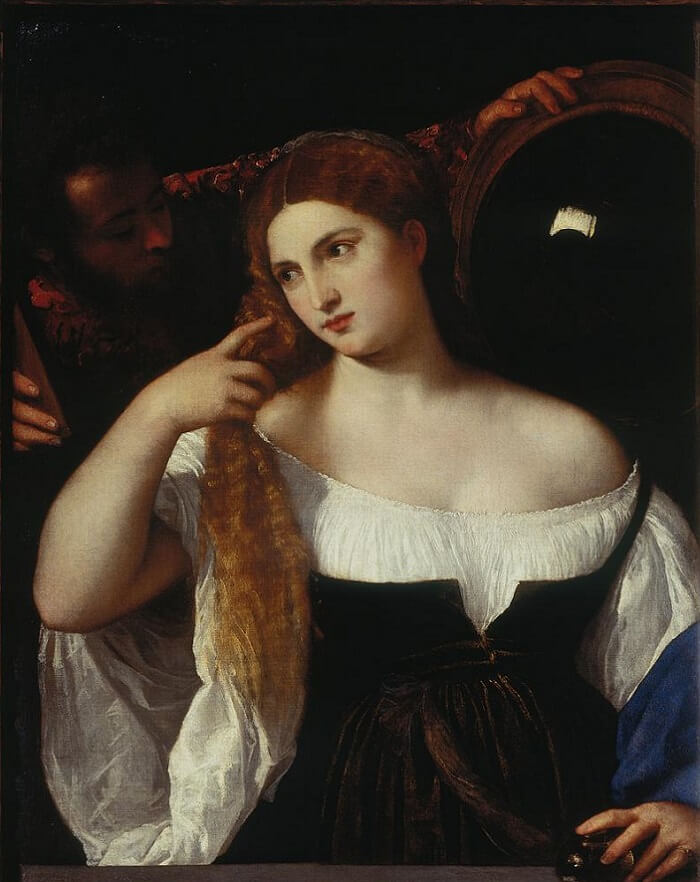
Isaac’s plots however would only be fully discovered some weeks later by the most unlikely person being Margaret as here when she finished bathing at the palace’s luxurious baths, as she went to the dressing room, Margaret when looking for her headband found in the box that the headband was stored in a note that Isaac wrote as a draft asking Vasily to invade Byzantium to restore Orthodoxy, and although Margaret did not fully understand it as she was unaware of what Muscovy was, she still found it suspicious especially since it was found at a box that stored her headband, and at the same time she could read the note as Isaac wrote it not in Greek but in Latin which she understood. At first, she made an investigation of how it ended up there by asking one of the palace maids who in turn said that she also did not know what that note meant but that she just placed the headband there as it was a spare box that Isaac dumped and that the maid did not bother to remove the note as she thought it was for Margaret. After finding the note, Margaret gave it to her mother who then read it carefully and now fully discovered that Isaac after all asked Vasily to invade Byzantium and not to help them as true enough Anne was present earlier when helping Justinian together with Isaac in asking for an alliance with Vasily III’s Muscovy. Anne then showed the note to her son-in-law the emperor Justinian III and after reading it, Justinian first came to realize how stupid he was all this time in never actually reading the notes he signed in which Isaac wrote all of them, thus he ordered Isaac to be immediately arrested and thrown into prison.

After spending a few days in prison, Isaac was brought to a torture chamber to be tortured in the style of the Spanish Inquisition where he was chained to a wheel with his clothes stripped off wherein at the bottom were spikes, and if he did not answer the question, he would be lowered wherein he would be punctured by the spikes at the front. Although already 76, Isaac was still tortured in this way and was continuously asked by Justinian III himself about his involvement in stealing lands from the nobles and forging the emperor’s signature as well as in asking the Russians to invade. Isaac however would at first still not confess and thus he would be punctured by the spikes so many times to the point that his face was already disfigured, however after being tortured so many times with the spikes, Justinian III would then proceed to have Isaac cut up into pieces beginning with his fingers, and here Isaac would finally confess. As all his fingers and toes were finally cut off, Isaac now confessed that he did steal the lands just so that he could gain more and that he asked Vasily to invade simply because he wanted an Orthodox emperor and for the empire to return to the faith of Orthodoxy as no emperor in Isaac’s whole lifetime wanted to do that, therefore he had to do the job by asking another Orthodox ruler to take over and restore the Orthodox faith. Having had enough of Isaac’s scheming and feeling so enraged at it, Justinian did not let Isaac go free and unpunished, instead Justinian had Isaac killed by being beheaded and cut up into pieces, and with Isaac beheaded his head was displayed in public at the Hippodrome as a traitor to the empire and thus his mutilated parts and head were dumped into the Bosporus Sea. Now that Justinian III was free from Isaac, his mother-in-law Anne took Isaac’s place as his top advisor and secretary, however all problems had not yet vanished as Vasily III was still alive and was preparing to invade Byzantium from the north with a massive army as Isaac when being tortured confessed that Vasily had assembled a very massive army. Justinian III thus had his army including Safavid and Portuguese allies together with the Venetian, Genoese, and Portuguese navies assemble again to face the imminent invasion of the Russians which could happen at any time soon, however after waiting for months this invasion never came. The reason now to why this invasion of Vasily III was averted was because Vasily III just like in real history died in December of 1533 from an infection caused by a wound on his hip, and with his death his generals and troops decided to give up the invasion as they were only going to do it because their ruler ordered them to do so, but with their ruler dead the generals saw no need to continue with this invasion but to instead protect the Principality of Moscow considering that Vasily’s son and successor Ivan IV was only 3-years-old, therefore the generals knew that because of having an underaged ruler, they knew their top priority was to defend their country as this case as shown many times in history could lead to a civil war. Once again, Justinian III’s Byzantium was spared from another major threat and would continue to exist and grow once again.


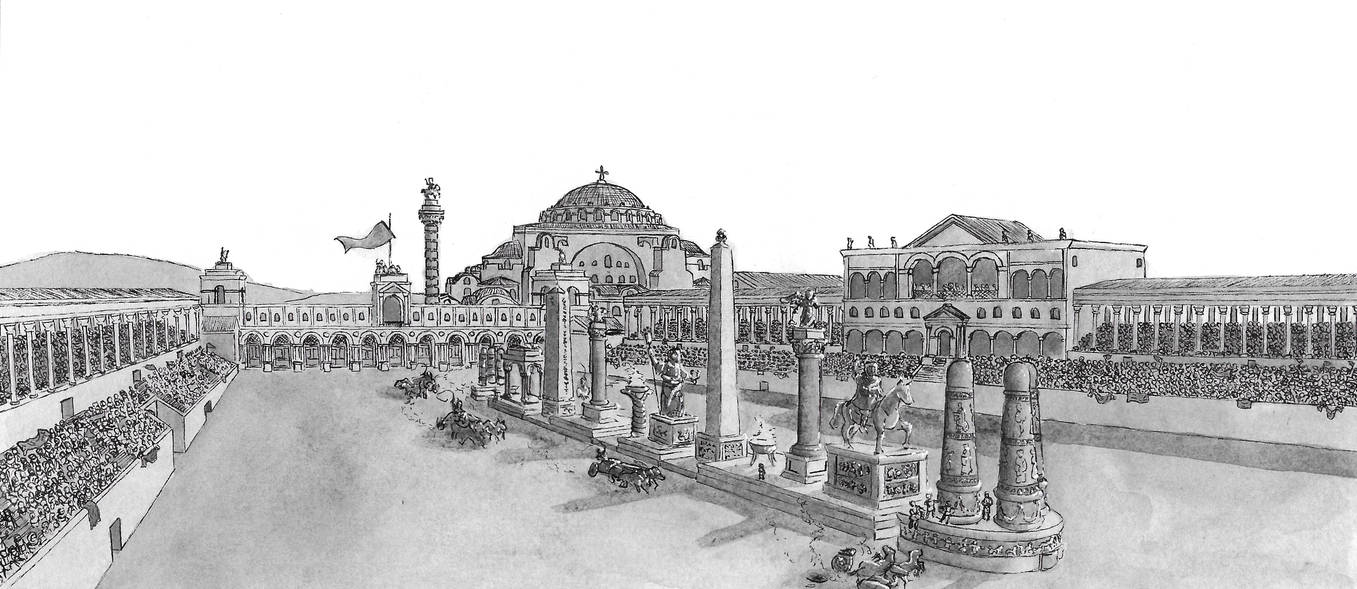
Epilogue and Conclusion

With two major obstacles for the 16th century Byzantium out of the way being first Charles V’s attempted invasion of Byzantium which was defeated and following that the attempted invasion of Vasily III of Moscow on Byzantium which did not happen due to Vasily III dying before it could be carried out, Byzantium was able to continue to live on again.
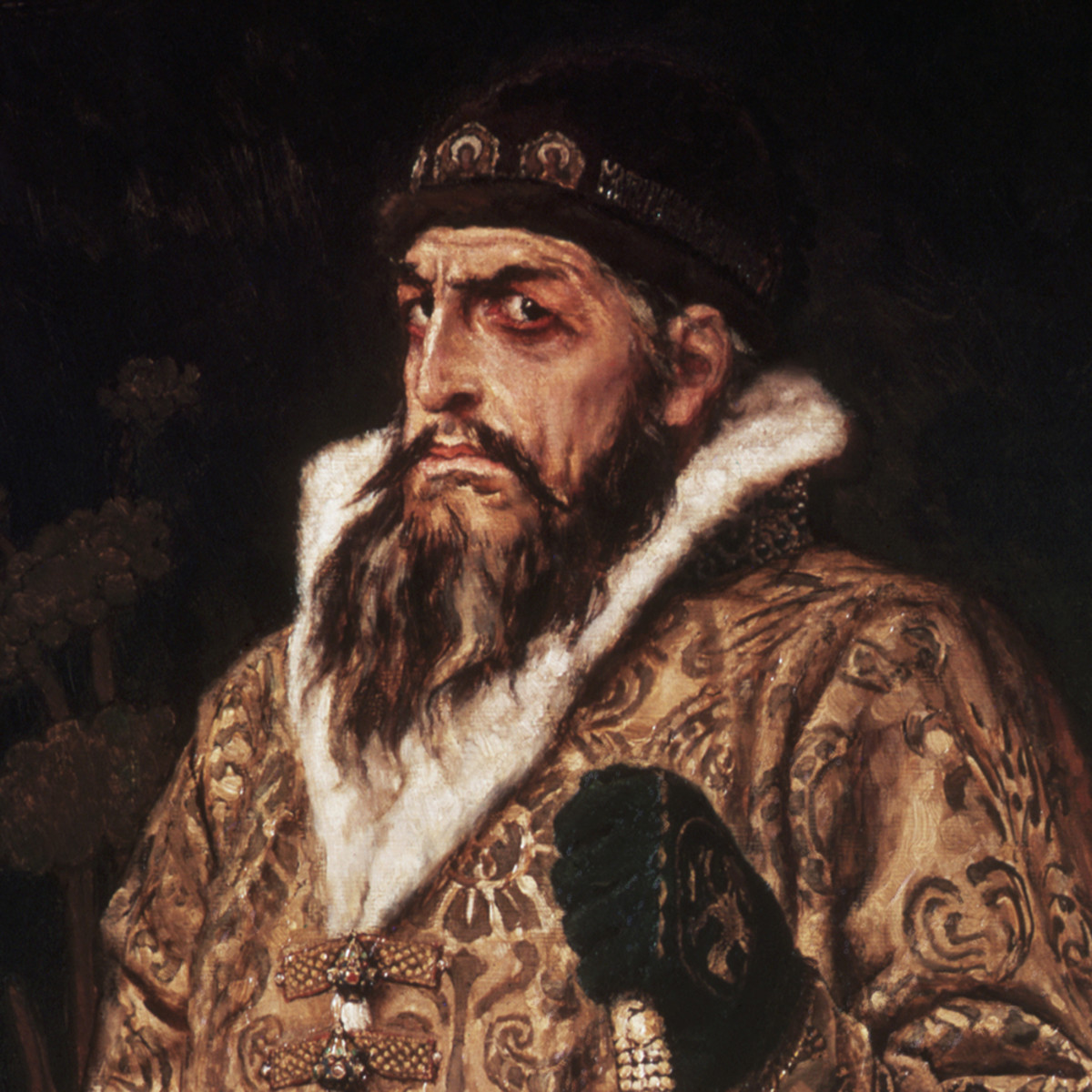
Now in Russia with Vasily III’s death, everything would basically just revert to how things played out in real history for Russia wherein his very young son Ivan IV succeeds him and is under a regency which holds the turbulent state of Moscow together, although years later in 1547 the 17-year-old Ivan IV becomes the first “Tsar of Russia” and will be best remembered as one of the greatest yet most vicious Russian rulers being “Ivan the Terrible” and in his reign Russia transforms into an empire. Although the same thing would go on in Russia in this story like in real history, thus the new ruler Ivan IV would not have any intention to conquer Byzantium the way his father did in this story as first of all he was only a child when coming into power and thus his regency would have to solely focus on consolidating their rule over Russia, thus the threat that Russia posed to Byzantium would completely disappear for the meantime. Back in Byzantium, Justinian III beginning 1534 would continue to rule in peace and continue bringing stability to the empire all while his mother-in-law Anne would be the one advising him especially when it came to diplomacy and maintaining the empire’s ties with Venice, Genoa, the Safavids, and Portugal as well as in successfully getting Pope Clement VII to once and for all prevent Charles V from sending another invasion and for the pope to have Charles V make peace with Portugal too. 4 years after 1533- the year of the great conflicts in Byzantium- in 1537 all things basically returned to normal for Byzantium right in time for them to celebrate the 1,000th year anniversary of the current structure of the Hagia Sophia thus making it from here on a 1,000-year-old church in which the structure it had then dated all the way back to 537 when it was completed under Emperor Justinian I the Great in only 5 years (532-537).
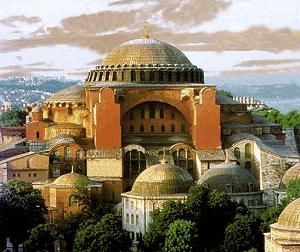
During the 1,000th year celebration of the Hagia Sophia, parades and festivities would go on around the streets of Constantinople for 2 weeks with foreign diplomats being given a tour of the great prestigious Byzantine capital too. In this story however, we will no longer discuss events in Byzantium after 1537 as we would just simply end it with their problems having already vanished, therefore we wouldn’t say when Emperor Justinian III would die, but in this story together with Margaret they would have 7 children all born between 1533 and 1540 with the 2nd and 3rd children born in 1535 as twins as in real history too, Margaret when marrying Federico II of Mantua had 7 children together too also all born between 1533 and 1540 with the 2nd and 3rd children being twins too born in 1535. In real history though, Federico II died in 1540 and thus their eldest child with Margaret being their son Francesco III Gonzaga took over as Duke of Mantua and Marquis of Montferrat despite being only a child though Francesco died just 10 years later in 1550 at only 16 and was thus succeeded by his younger brother Guglielmo I Gonzaga who was born in 1538. Margaret in real history had ruled as regent for her first son Francesco until his death and afterwards for her next son Guglielmo until he came of age in 1556, while her mother Anne still lived until 1562 dying at the age of 69 while Margaret lived until 1566 dying at 56, and in 1574 in real history under the rule of her son Guglielmo did Mantua and Montferrat join together to become one duchy whereas Mantua became the leading one making Montferrat just under the Duchy of Mantua and not a separate one under one ruler anymore. In this story however, both Montferrat and Mantua with Federico II Gonzaga dead without any children would instead fall under Charles V’s direct control through his cousin Julia as its regent- who was the late Federico’s wife in this story- until Charles would find someone to put in charge of both of them, though this would no longer be explained in this story anymore. This story too finishing off in 1537 thus will no longer say when Justinian III as well as Margaret and her mother Anne of Alencon would die and if any of Justinian and Margaret’s children would succeed as the new Byzantine emperor or if one would return to Montferrat in Northern Italy to rule it, thus all of these things will be up to you readers to decide on!

Meanwhile as for Charles V, here in this story following his defeat to the Byzantines he would no longer attempt another invasion and instead return to dealing with his own problems in both the Holy Roman Empire and in Spain especially since tensions have now increased in the Holy Roman Empire with the spread of the new Protestant faith in which many of the German princes within the empire have converted to it thus putting more pressure on Charles V.
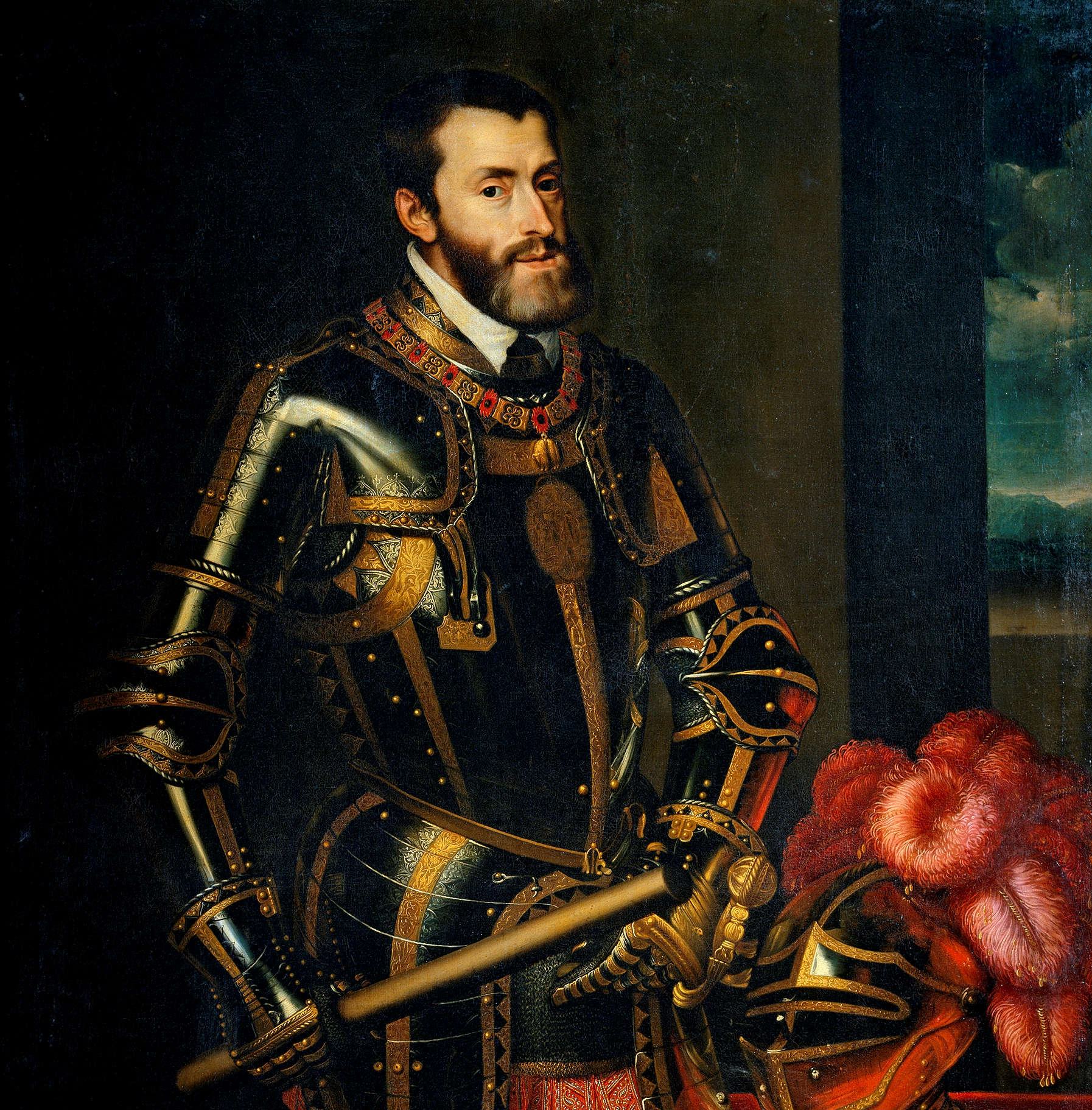
On the other hand, Charles would soon enough not be able to manage both Spain and the Holy Roman Empire at the same time especially since both kingdoms he ruled were so large and had so many problems, therefore in 1533 too just like in real history, Charles- in this story after his failed invasion of Byzantium- would return to Spain and rule from there while deputizing his younger brother Ferdinand to rule the Holy Roman Empire in Charles’ name. Just like in real history too, Charles in this story from Spain would embark on another mission this time to battle the pirates in North Africa wherein Charles in this story like in real history would also succeed in capturing the ports of La Goulette and Tunis in 1535 before sailing to Italy arriving in Naples in 1536. In the next few years, Charles would be busy dealing with the Protestant princes of Germany wherein many of them had already been rebelling against imperial rule while in the meantime the Spanish would once again continue to succeed in colonizing the Americas as in 1536 they would conquer what is now Argentina and establish the city of Buenos Aires, in 1538 found the city of Bogota in today’s Colombia, in 1539 begin exploring deep into North America in what is today’s Southwestern United States, and in 1541 the Spanish would establish their colony in what is now Chile thus making Charles V rule most of the Americas now except for Brazil which would remain under Portugal, and Eastern Canada which since 1534 was claimed by France.
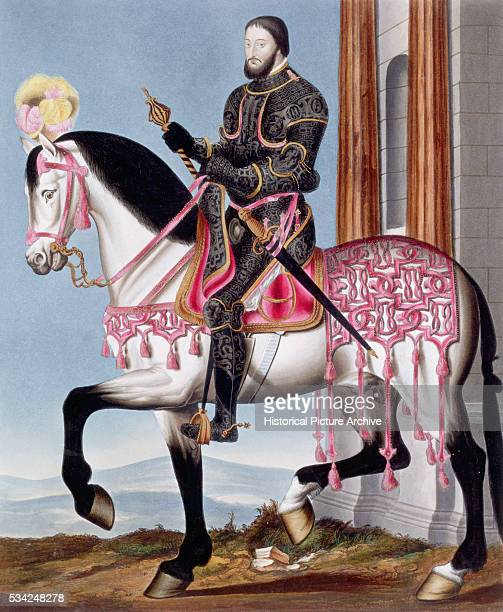
In 1542 though, Charles V would once again return to going to war against Francois I of France this time in a much larger scale as King Henry VIII of England would ally with Charles V by sending English forces to assist him while Francois I would be allied with King James V of Scotland sending Scottish troops to assist the French, although in real history with the Ottomans around their sultan Suleiman I here assisted Francois I but in this story with the Ottomans not around they would obviously not assist Francois I while Byzantium on the other hand in this story as they still survived would not bother to assist anyone in this war as they have now grown tired of fighting large scale wars like these. As this war primarily between the Holy Roman Empire-Spain against France was devastating Europe, the Portuguese would arrive in Japan in 1543 being the first time Europeans would be in contact with Japan while in Italy construction of St. Peter’s Basilica in Rome would begin in 1546 with the famous Renaissance artist and architect Michelangelo who previously designed and painted the Sistine Chapel made the chief architect of the basilica which in this story when finished would definitely surpass Constantinople’s Hagia Sophia in size and splendor.
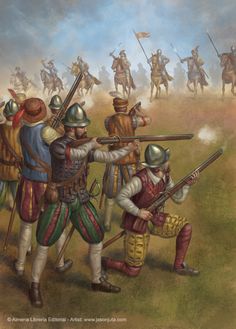
The war between Charles V and Francois I would then come to an end in 1547 when Francois I died while in this year Henry VIII of England also died and Charles too in this year defeated the army of the Protestant German princes at the Battle of Muhlberg, and following this Charles would make several attempts to return his Protestant subordinate princes and subjects back to the Catholic faith through peaceful means in a new project of his called the “Counter-Reformation” but would never really succeed in doing so. On the other hand, Charles in promoting the Catholic faith had also authorized the new religious order being the Jesuits to have missions in faraway lands in Asia to convert the people there and such Jesuit missionaries of this time would include the Spanish Francis Xavier who however accompanying the Portuguese navy reached as far as Japan to evangelize the people, while Charles V in the meantime also pushed for abolishing slavery among the native population of the Americas despite his Spanish troops enslaving the natives there. After facing so much pressure especially by the rising power of the Protestant princes in Germany and the difficulty of running both Spain and the Holy Roman Empire at the same time considering that Charles’ empire included Italy, the Netherlands, and even Spain’s colonies in the Americas, Charles V in this story like in real history would finally decide to abdicate in 1556 and retire to a monastery in Spain where he would die in 1558.

When he abdicated in 1556 with his empire both the Holy Roman Empire and Spain going bankrupt, he passed on his rule over Spain, Southern Italy, the Netherlands, and the Spanish colonies in the Americas to his son Philip II and his title as “Holy Roman emperor” and the Holy Roman Empire to his younger brother Ferdinand I. Long story short, the Holy Roman Empire- which was neither holy, nor Roman, nor an empire- following Charles’ abdication would continue to face more unrest as the Protestant princes and their states within it would continuously challenge the Holy Roman emperor’s authority while Spain on the other hand would recover and reach its zenith of power under Philip II as following the death of the last Portuguese king of the Alviz Dynasty Sebastian in battle against the Sultanate of Morocco in Morocco in 1578, the Alviz Dynasty ended as Sebastian had no children, thus in 1580 Philip II of Spain claimed Portugal as his mother was Portuguese, thus Spain and Portugal unified into one kingdom while all of Portugal’s colonies fell under Spanish rule too, and it would remain this way for the next 60 years, though this story will no longer explain what would happen with Byzantium’s relations with Portugal anymore following Portugal falling under Spain in 1580. This story too will simply just end here after Charles V’s abdication in 1556 and death in 1558, and so the rest of the events in the latter part of the 16th century no matter how eventful they were will not be discussed anymore.


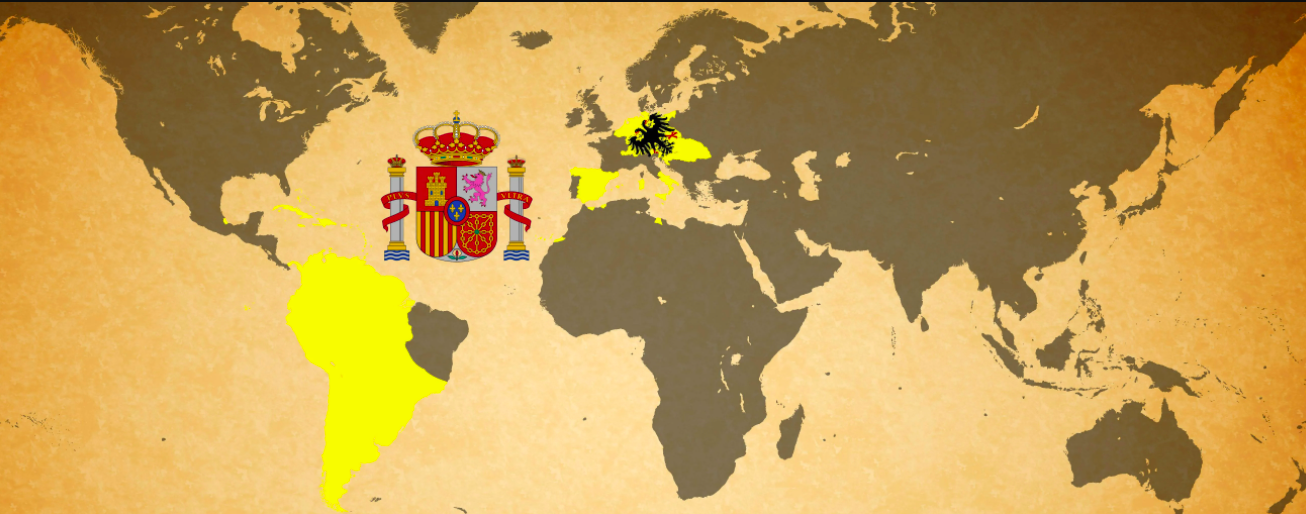
And now we have reached the end of the epilogue story to the 12-chapter Byzantine Alternate History series. Overall, this story is mostly based on hypothesis as the Byzantine Empire true enough died in 1453 when Constantinople fell to the Ottomans and in 1461 when the last Byzantine state being the Empire of Trebizond fell to the Ottomans too, thus I had to basically analyze the events of the 16th century to create this story in order to make it seem realistic. Basically, this particular story was a passion project of mine and something I have always wanted to experiment on as when I wrote chapter XII months ago as the final chapter of my alternate history series, I finished it with an ending wherein Byzantium had lived on beyond 1453, and thus after writing that I felt like experimenting by writing a hypothetical fan fiction story on Byzantium in the 16th century. Now when it came to writing this story, it took me a lot of time to conceptualize everything as for one I would be going to an entirely new era I am not too familiar with being the 16th century and since Byzantium too in real history never made it to the 16th century, it would be difficult to put the entire story together especially if Byzantium were in it. When creating this story, I wanted to make it sound realistic as possible, thus I went with the option of having the 16th century Byzantium no longer an Orthodox world power like it was before but just an empire large enough in their part of the world and a Catholic one as well. In addition, I also wanted to write it in a way where Byzantium would fit in with the 16th century world which is why I had to make sure I put the bigger stories of the world into it such as Charles V’s empire and the rising powers of Spain and Portugal together with new things introduced in the 16th century from the ideas of the Renaissance and Protestant Reformation to new products including fashion styles and products from the New World seen for the first time like cacao, potatoes, and tomatoes. As for creating this story, I thought of putting the Justinian III character in it as this character was in fact inspired by an artwork by Diogos_Tales on Instagram which tells an alternate history story of Byzantium in the 16th century with a warrior emperor which in that case was Justinian, and thus I decided to put this character in my story, therefore I would have to thank the artist for creating this character and giving me the idea. On the other hand, since I already knew the Palaiologos family continued to exist ruling the small Italian state of Montferrat in Northern Italy with Margaret Paleologa being the last ruler of the dynasty, I decided to add it in as well for the reason that the Byzantine ruling dynasty continued somewhere else. As for Charles V’s part, I decided on making him and his vast empire the main antagonist of this story as he was true enough the imperialist ruler of the 16th century who would happen to be the most likely person to attempt to battle Byzantium if Byzantium survived as in real history, it is known that Charles V went into conflict with the Ottomans, but in this case since the Ottomans would no longer be around the most likely power to take their place would be the Byzantines, and for this story this was just the gist for Charles V as his story was a really complex one while he too is a more well-known historical figure and perhaps one of the most famous in the 16th century. The new Persian Safavids were also given a big role in this story as I also felt they would be a good ally to the Byzantines, and since I already discussed a possibility of Portugal and Byzantium allying with each other I also chose to keep the Portuguese here as allies of Byzantium for the sake of continuity from chapter XII, and as for the Russians I also wanted to add them in this story as many see them as Byzantium’s true successor thus for that reason I wanted to show them as a power that did want to take over Byzantium to revive it as an Orthodox state whereas the old Byzantium had converted to Catholicism while at the end of chapter XII I also hinted that the Russians being Moscow would soon enough pose a threat to Byzantium and so for continuity I decided to add that Russian angle here. Lastly, to show continuity from where chapter XII left off and to explain the context of the 16th century, I had to add the really long background part as it would be too confusing if I just jumped straight to the climax in the 1530s, though I also wanted to explain how Byzantium played along as the 15th century ended and the 16th century began while I too wanted to explain how the emperors of this time had reigned. Overall, this story altogether was one that involved complex politics, plots, alliances with other powers, powerful women, new ideas and inventions, the smaller details including food and fashion, religious conflicts, blood and gore, and epic battles, and I thought of putting all these elements in this story to give it an overall Byzantine feel despite being already in the 16th century, but at the end history still does repeat itself thus making all these things happen no matter where and what era the story is. Now as this story was basically all just based on my observations on the history of the 16th century and my own theories of what would happen to Byzantium if it lasted to the 16th century, it was not really based on any sources thus everything I wrote here should just be taken with a grain of salt as true enough I basically went out of my comfort zone to write about the 16th century in which I am not very familiar with as Byzantium in reality was no longer around, and if anyone would find this story quite silly, it was meant to be that way. Now, as I simply wrote this story just to be an epilogue to chapter XII being the grand finale of the alternate history series, I chose to make this one not as long and detailed, and at the same time too this story will no longer have any continuation as I have decided to simply end my stories here in the 16th century and no longer go any further. This too will be the last fan fiction story I will write in quite a while whereas the next one would be the 3rd follow-up to chapter I that was set in the 4th century which would be a direct sequel to the first follow-up story I wrote. Now, this is all for the epilogue chapter of Byzantine Alternate History, this is Powee Celdran, the Byzantine Time Traveler… thank you and goodbye!



Do you happen to see any present-day connections between Byzantium and “Turtle Island”, as North America is known to the natives there?
LikeLike
I don’t know what Turtle Island is.
LikeLike